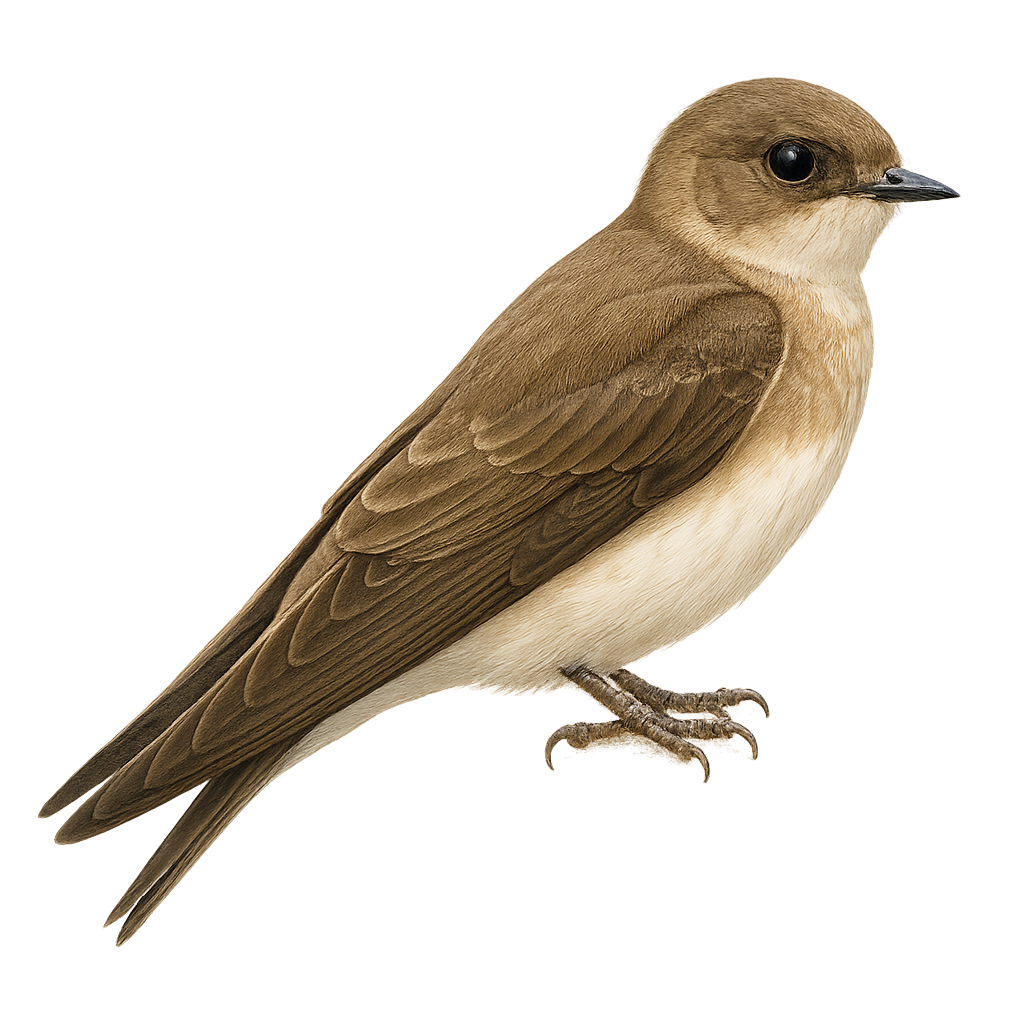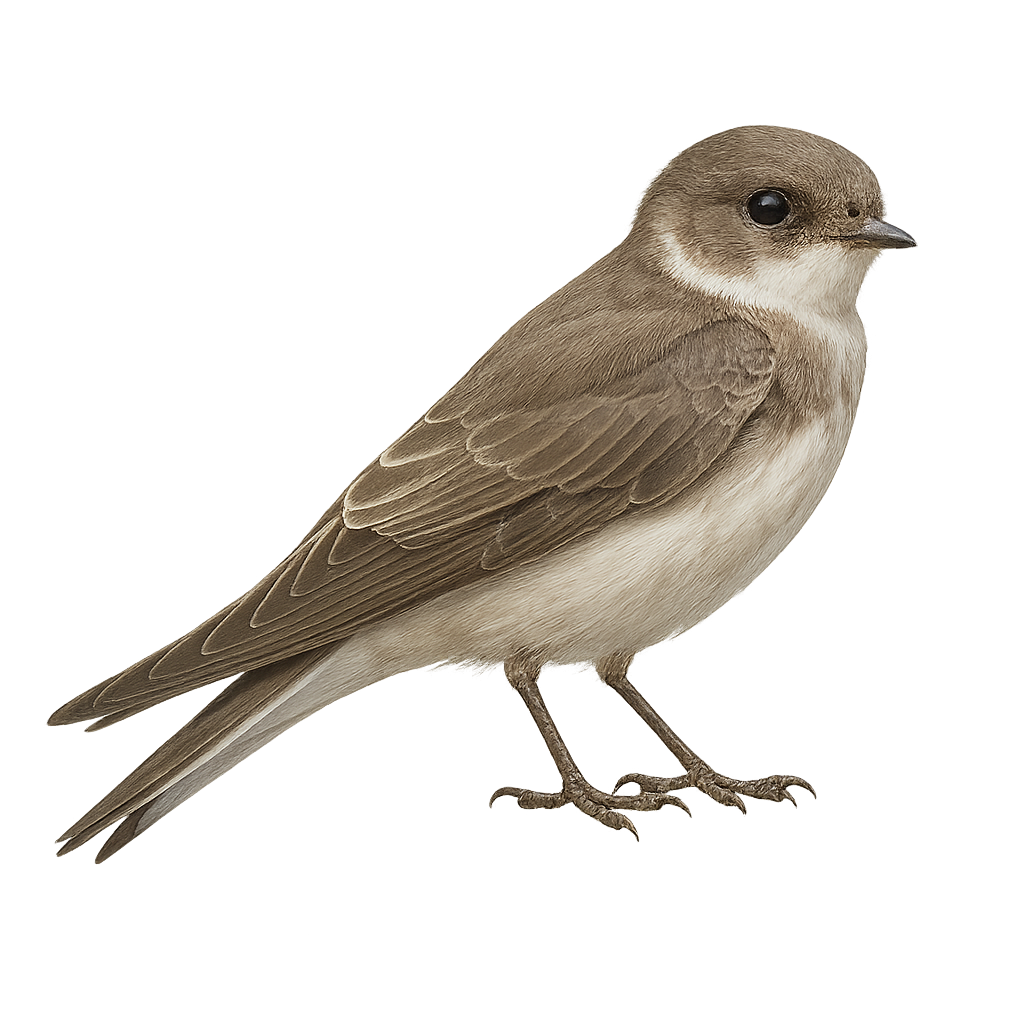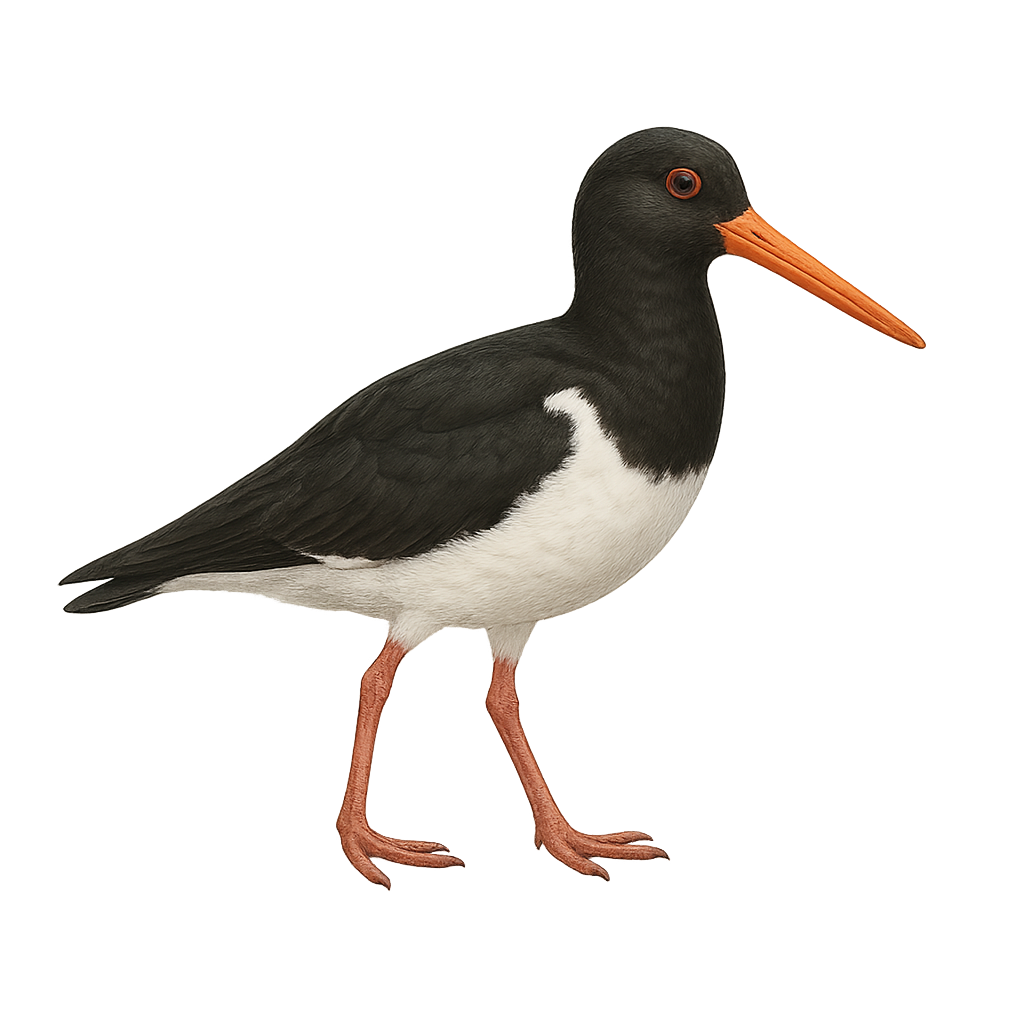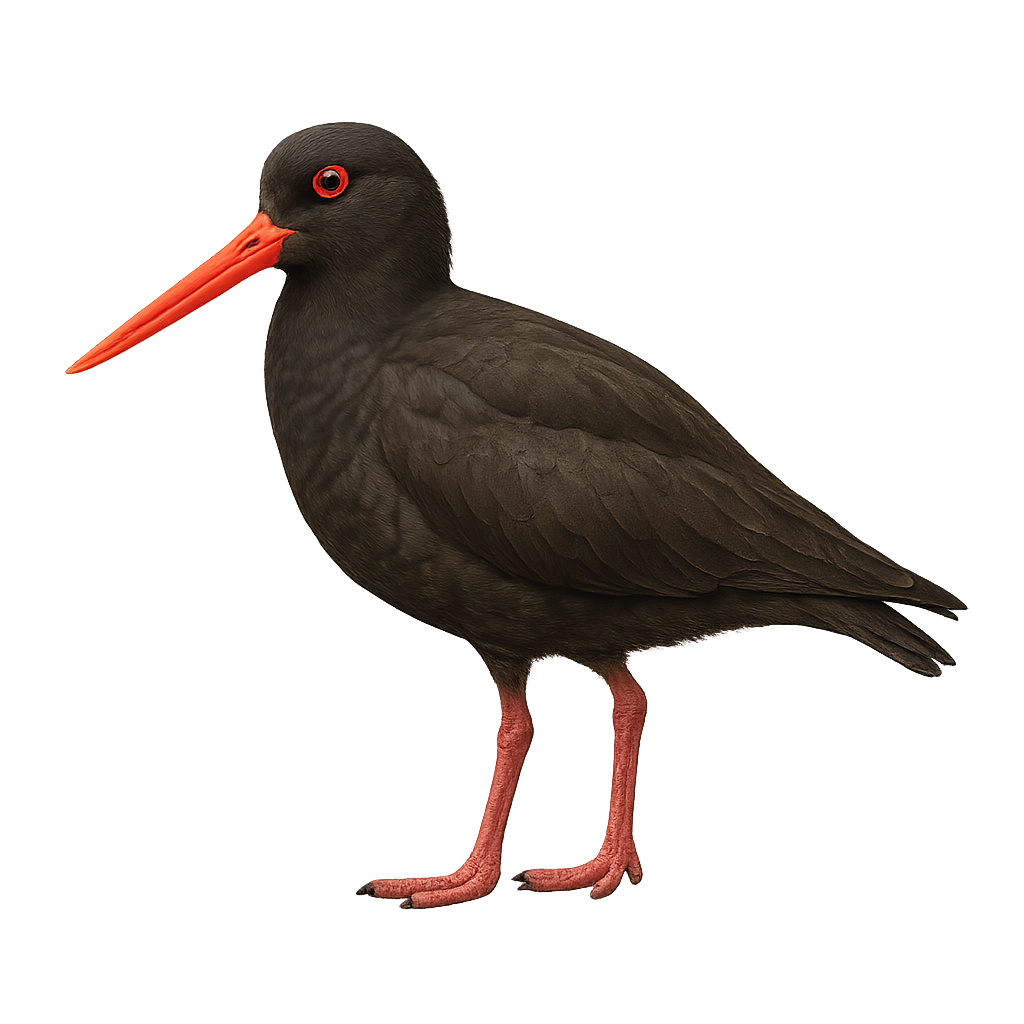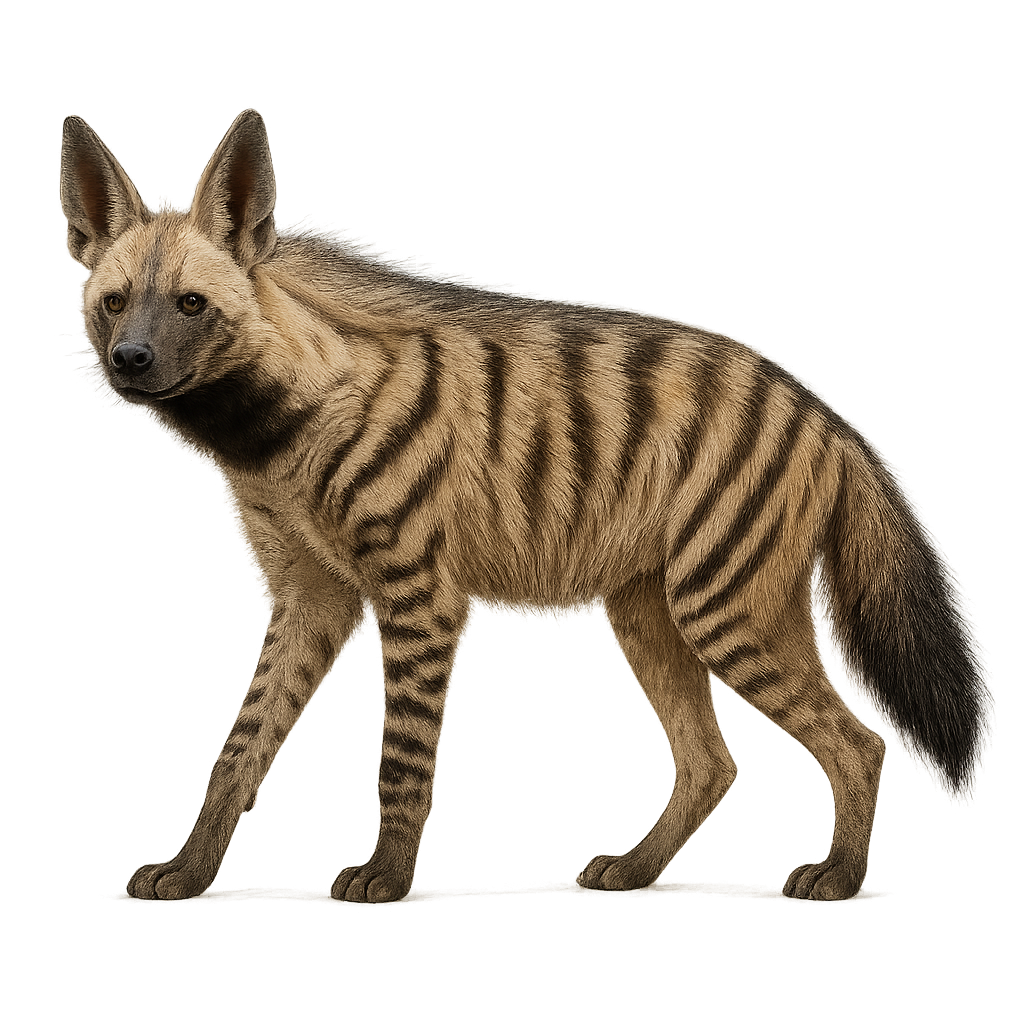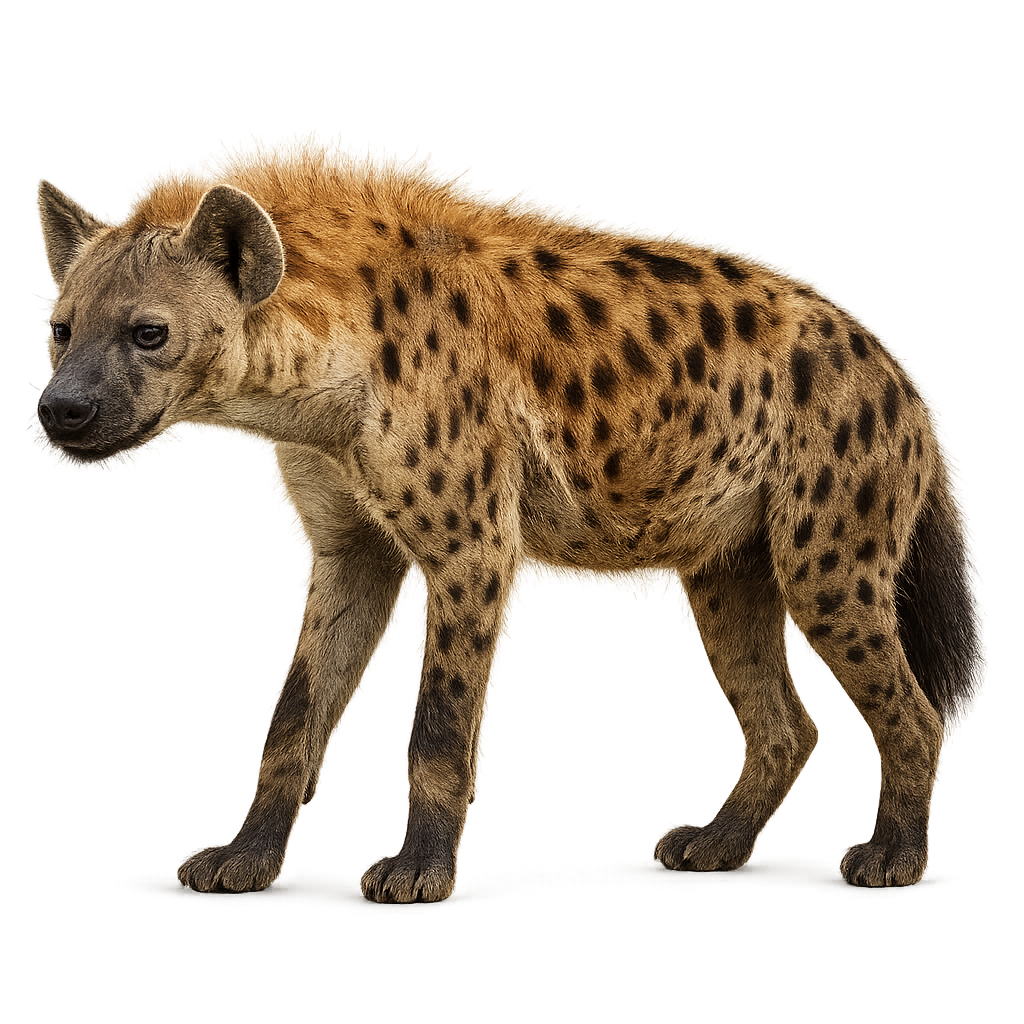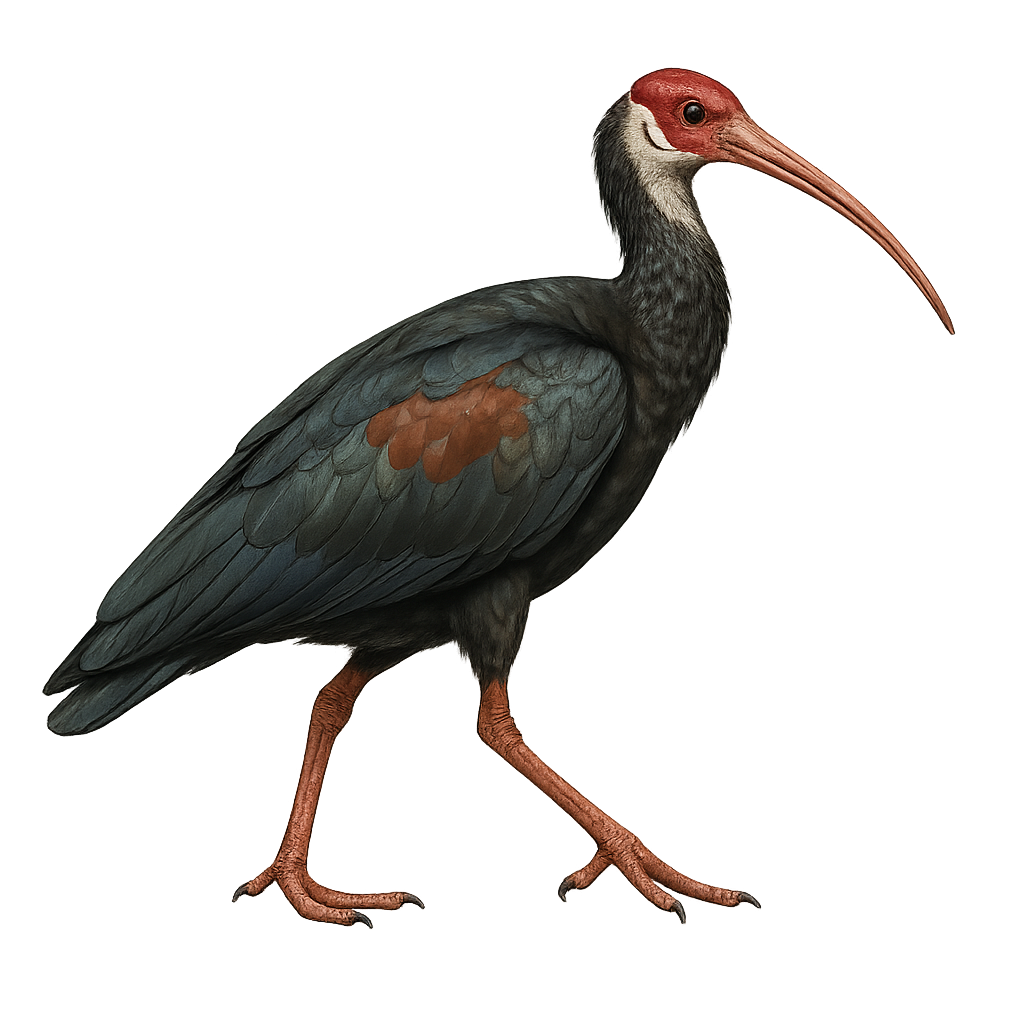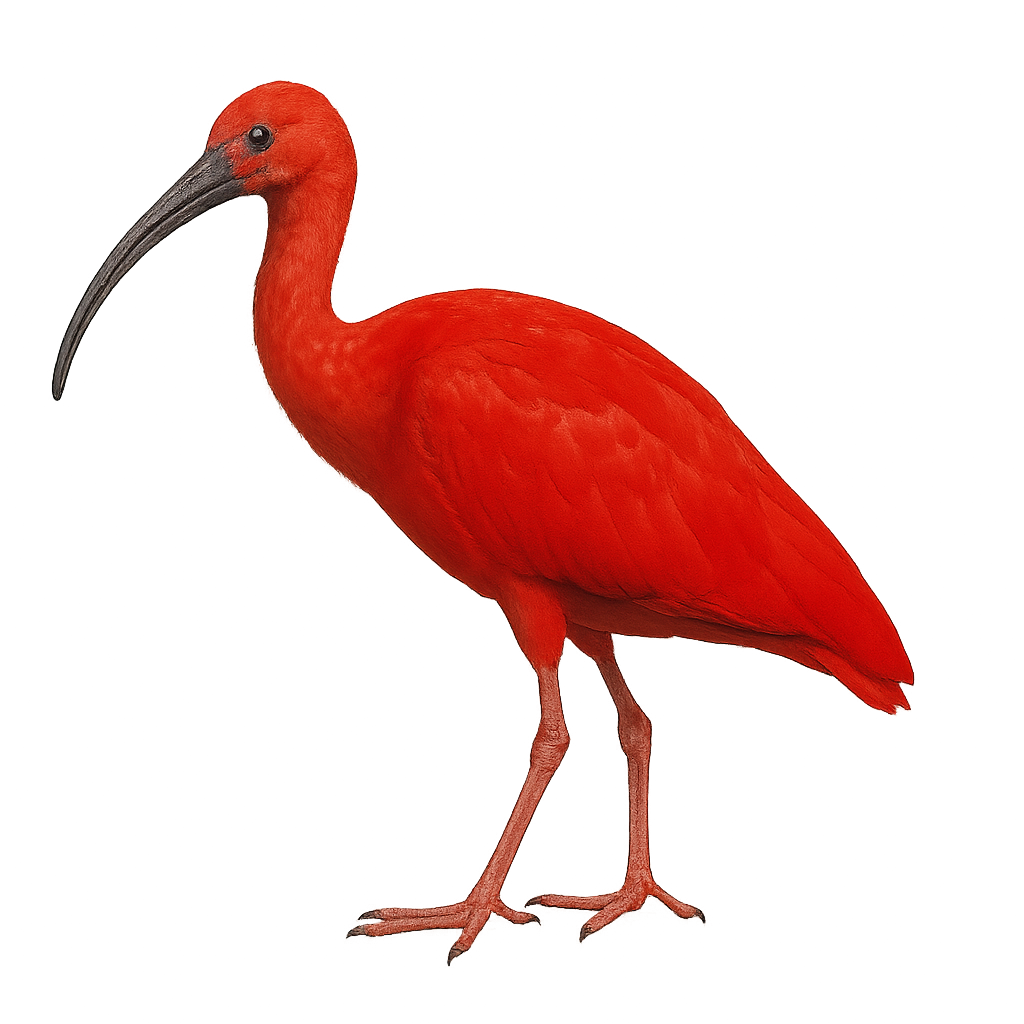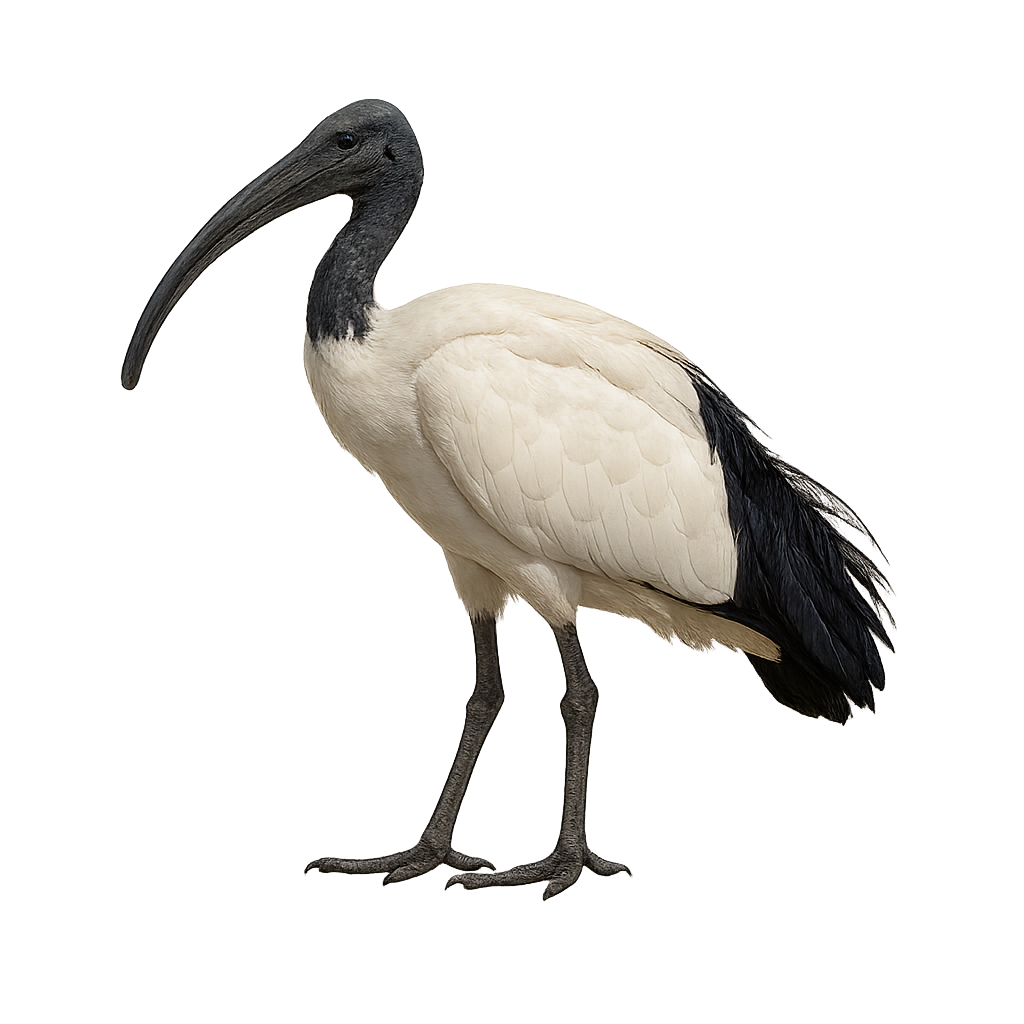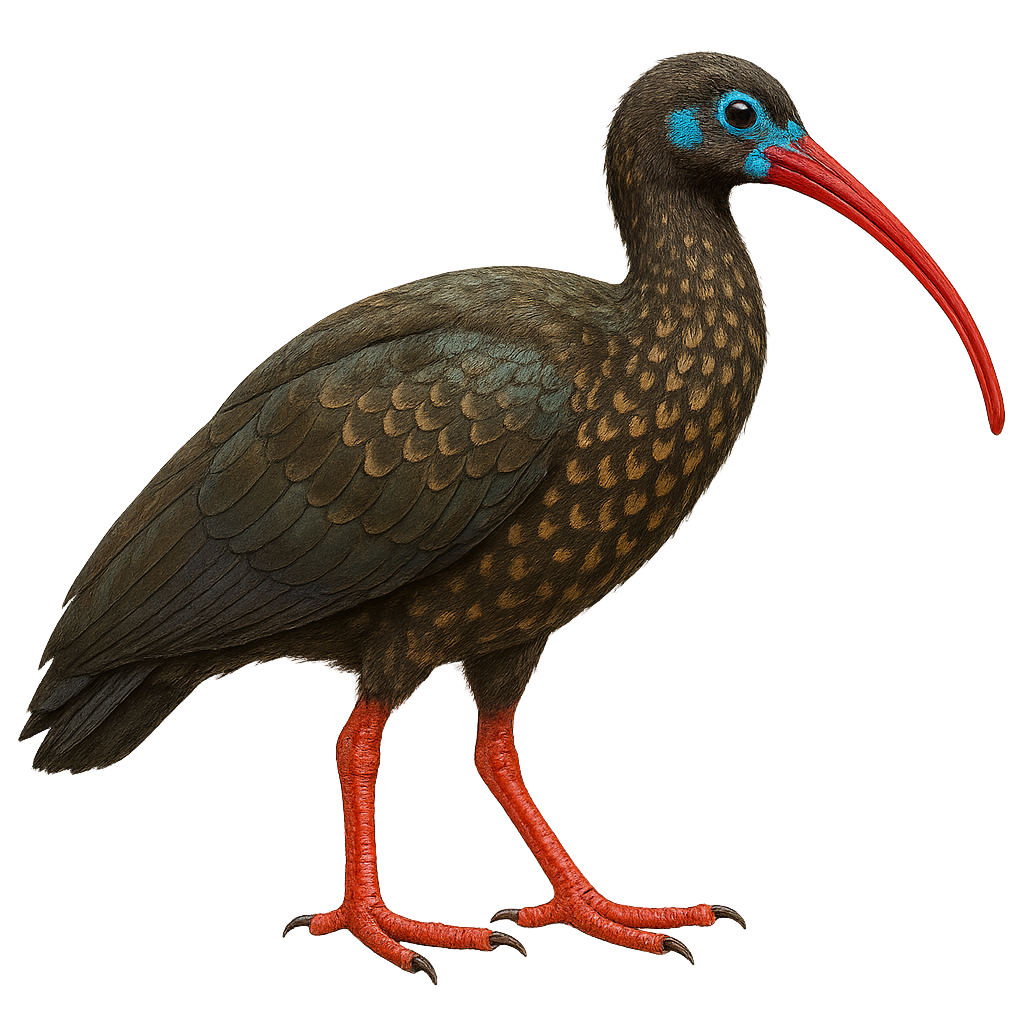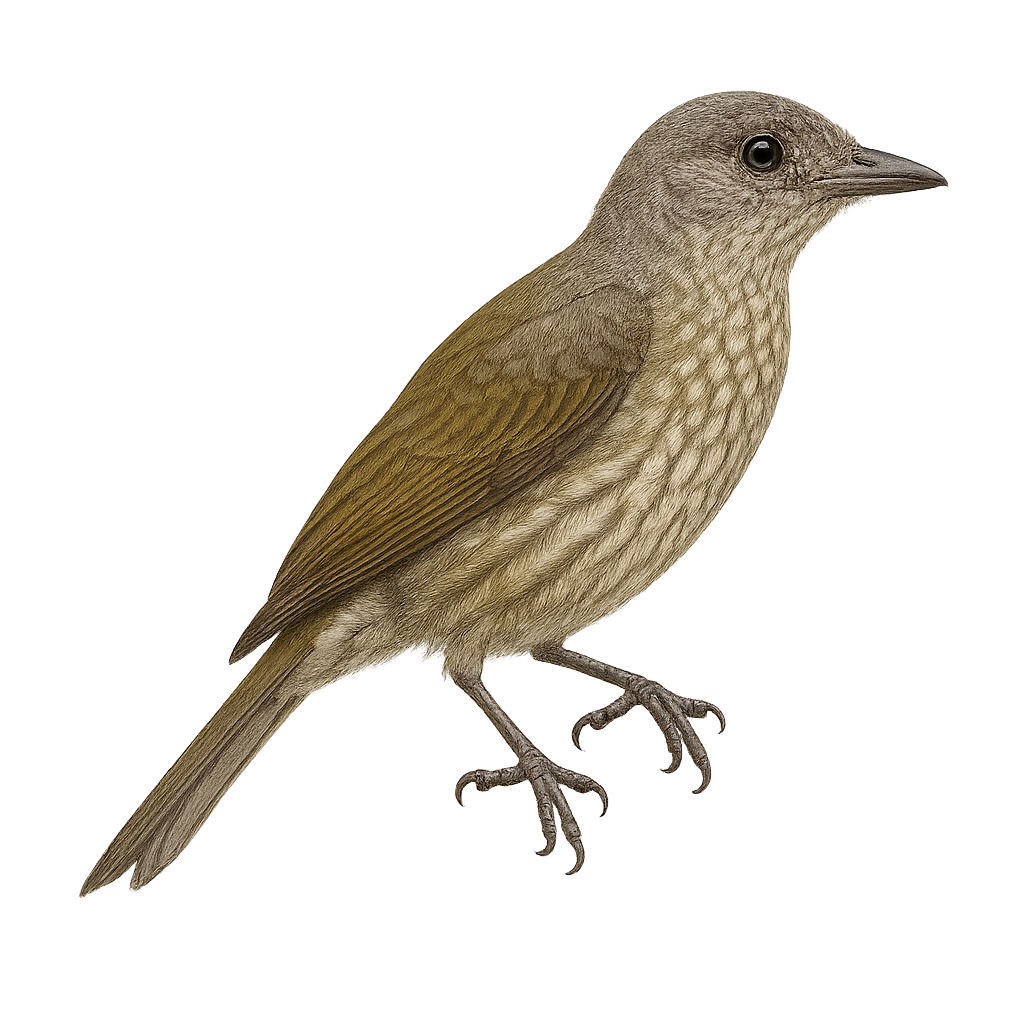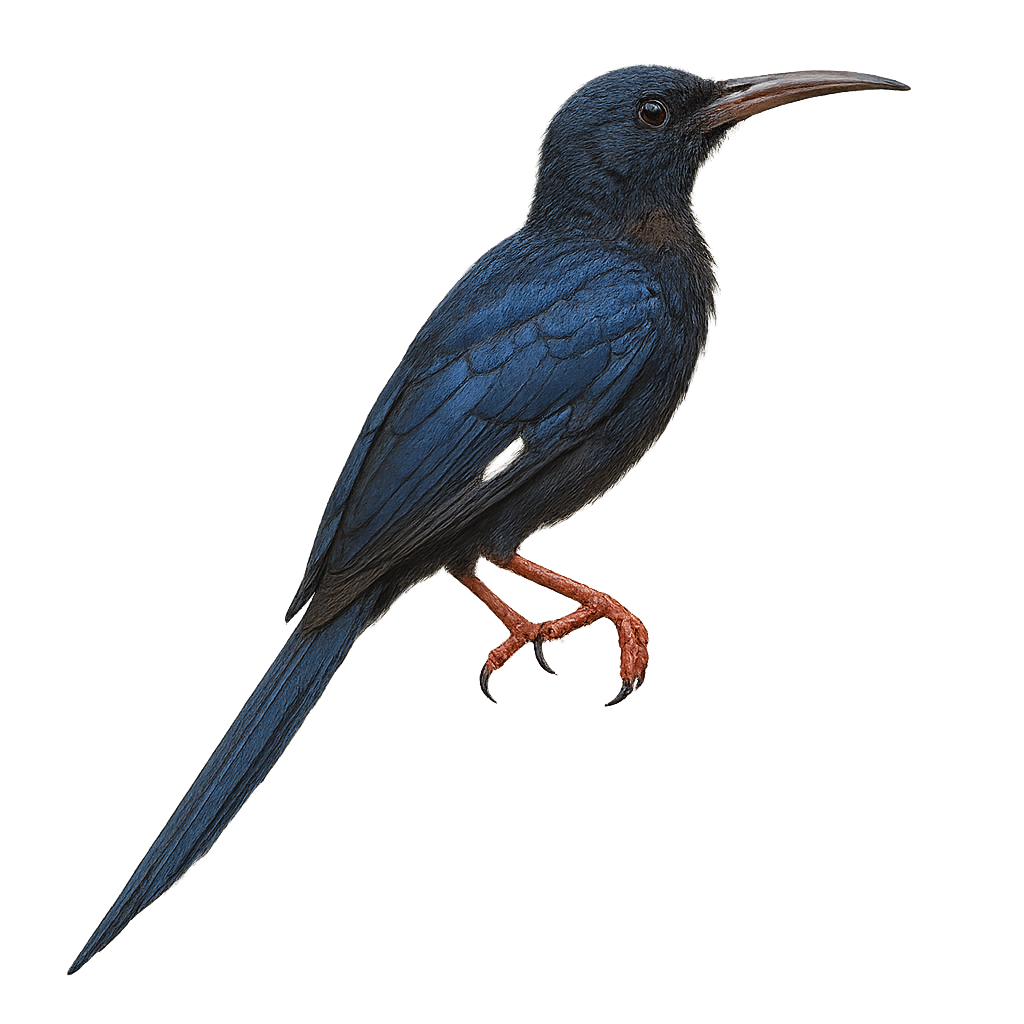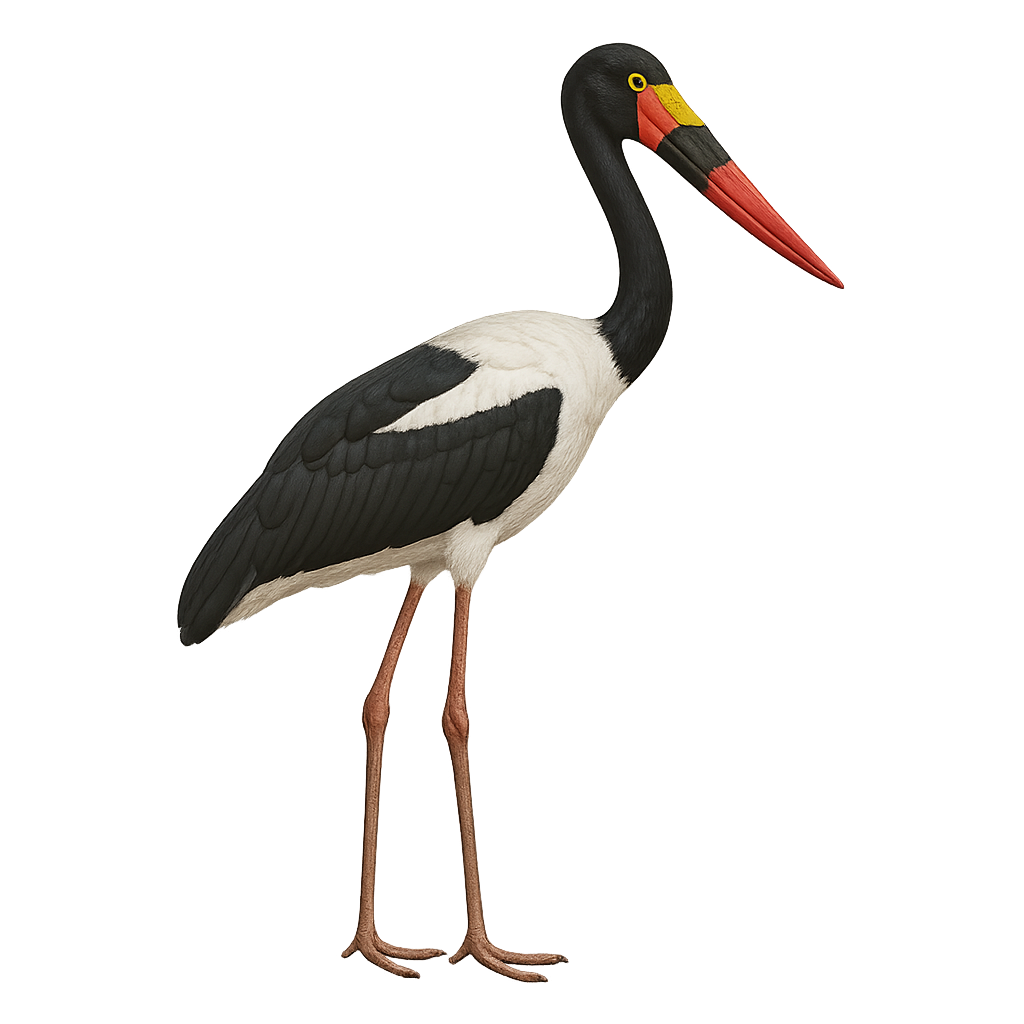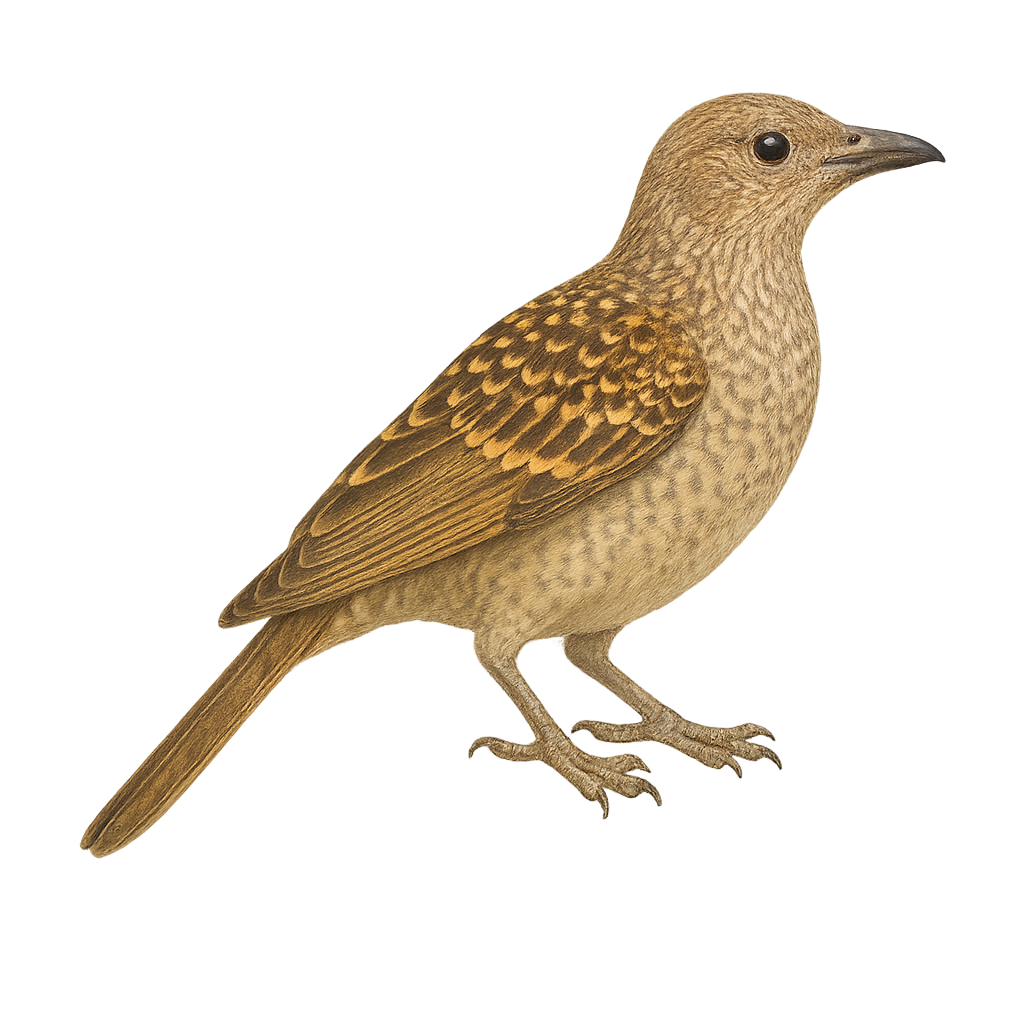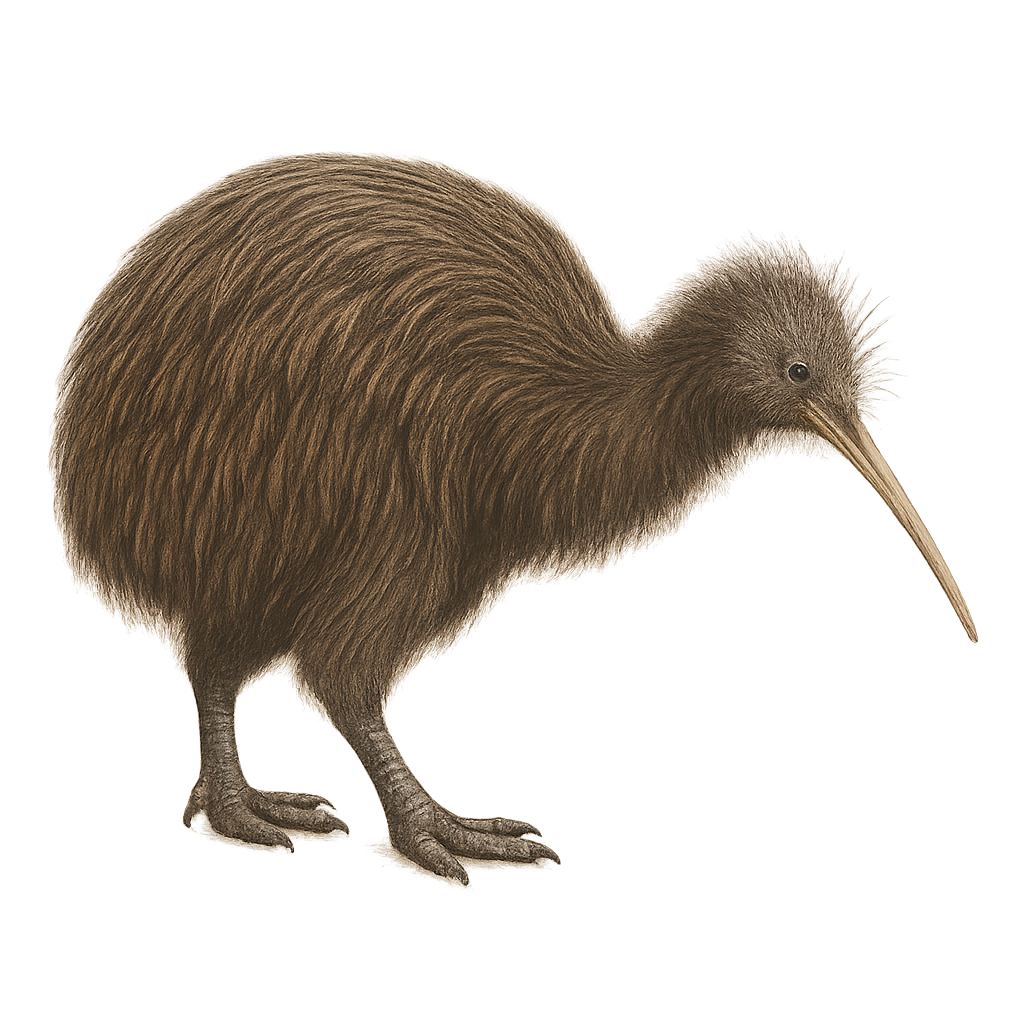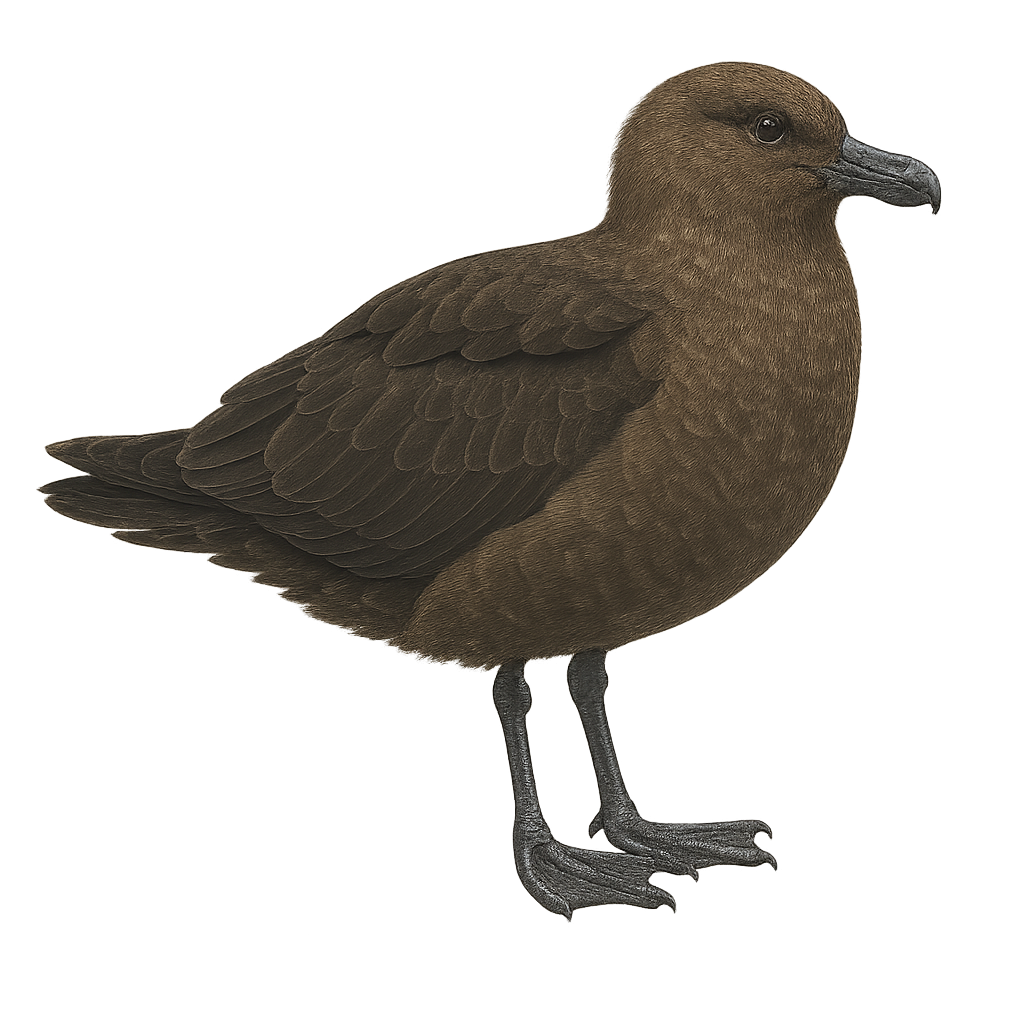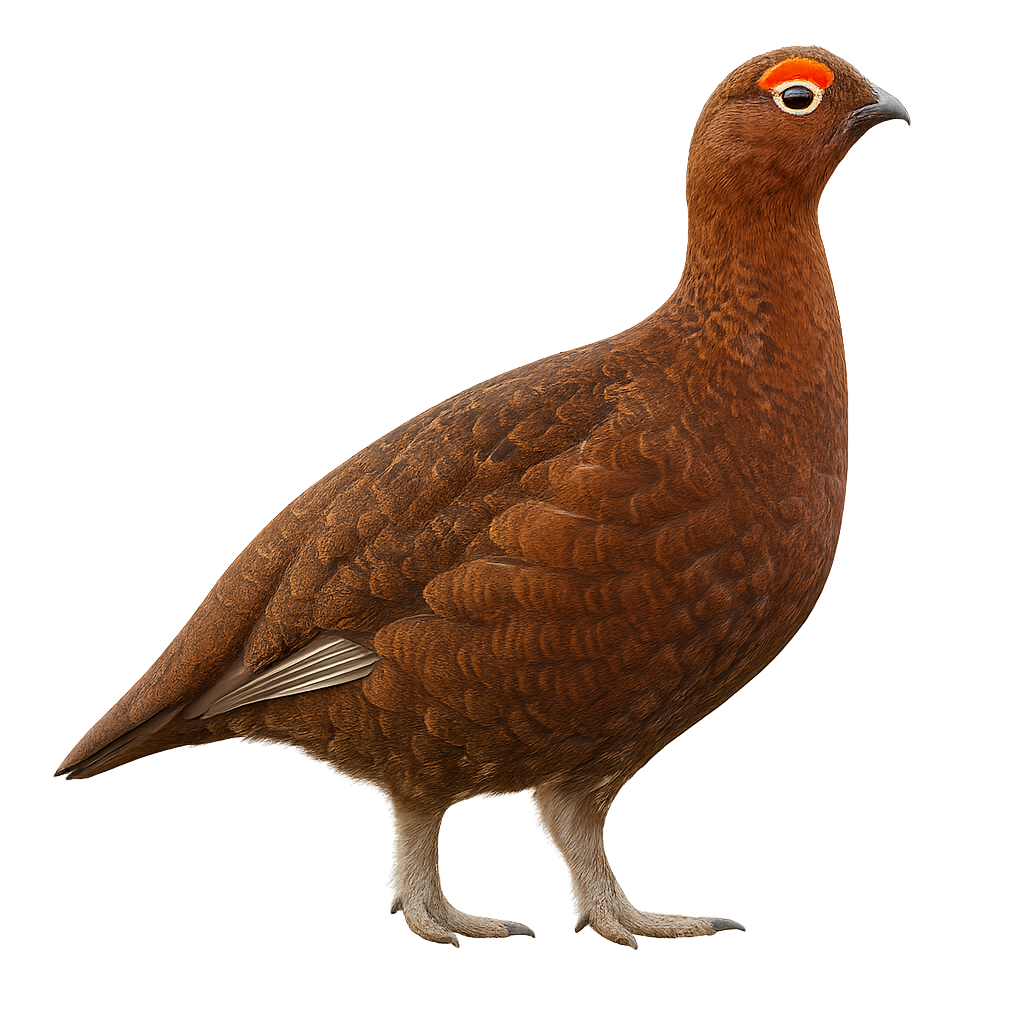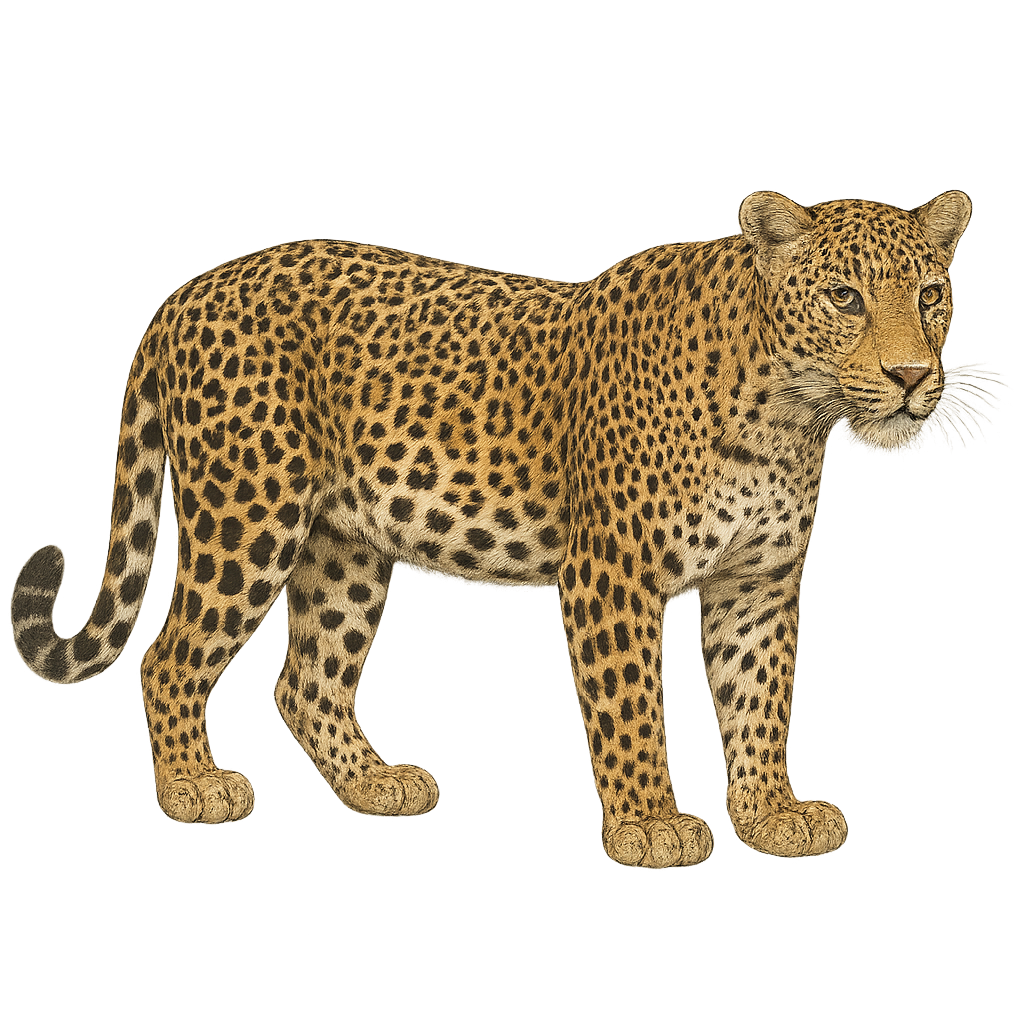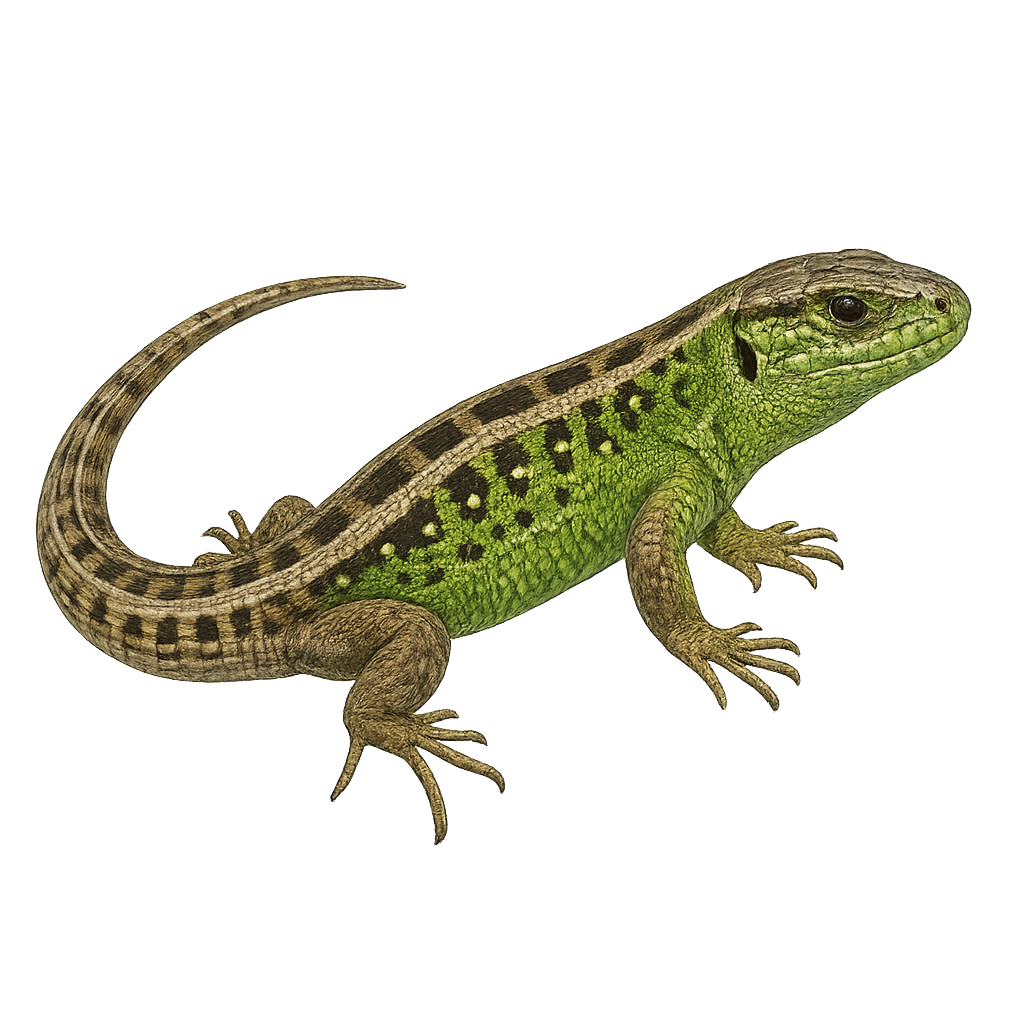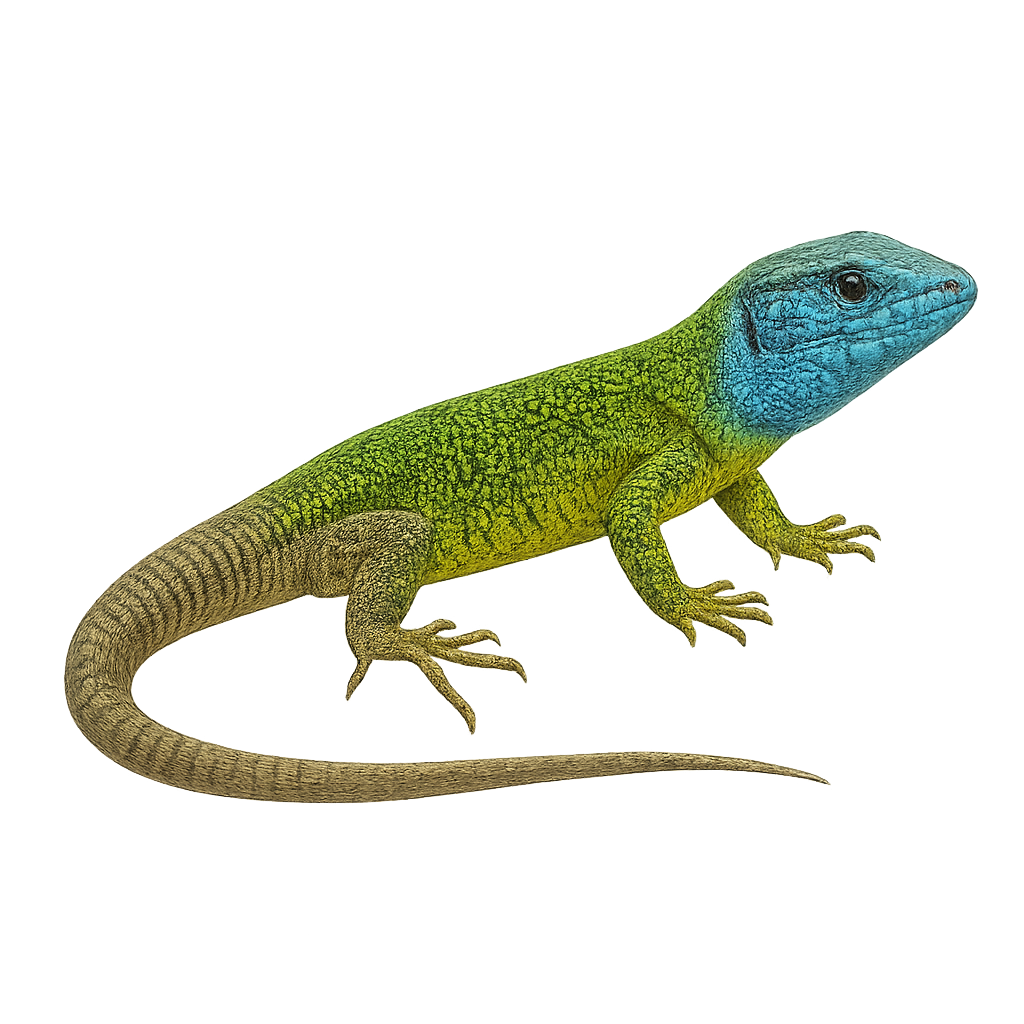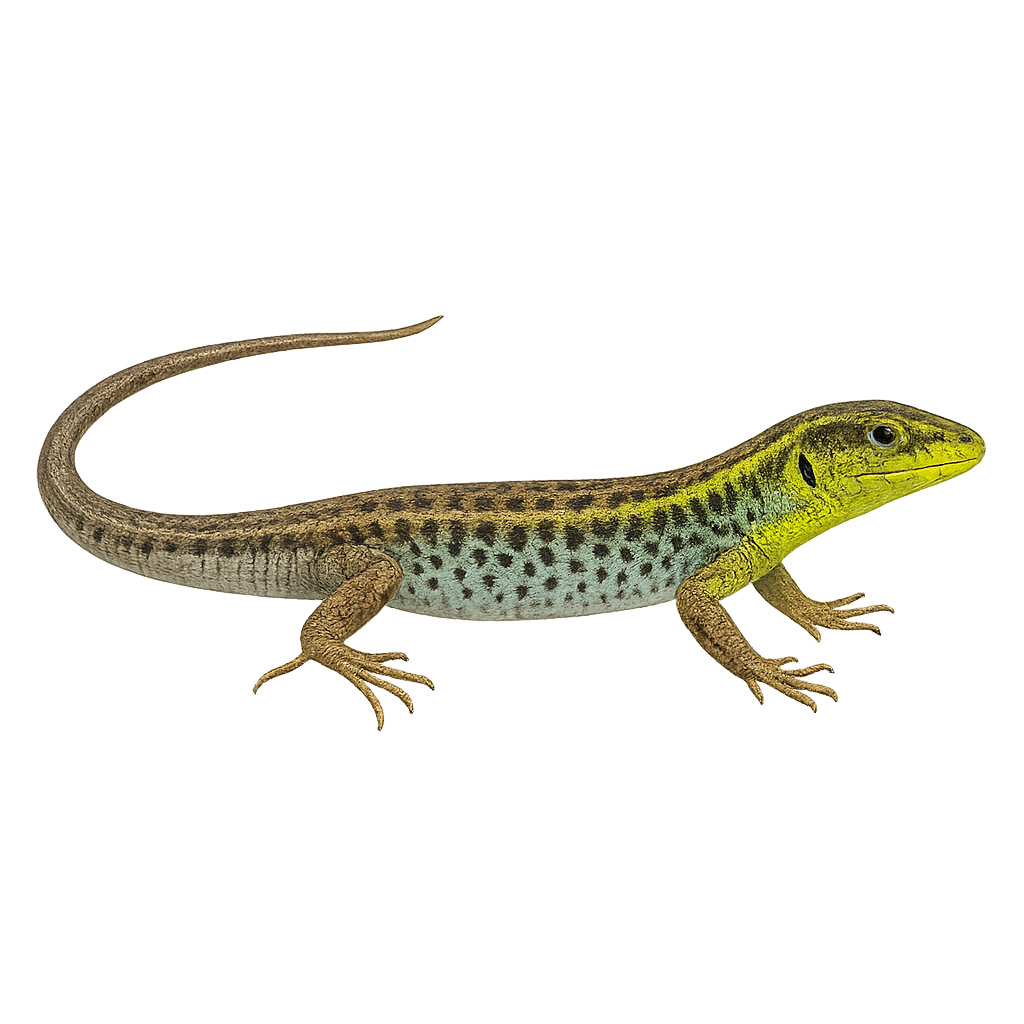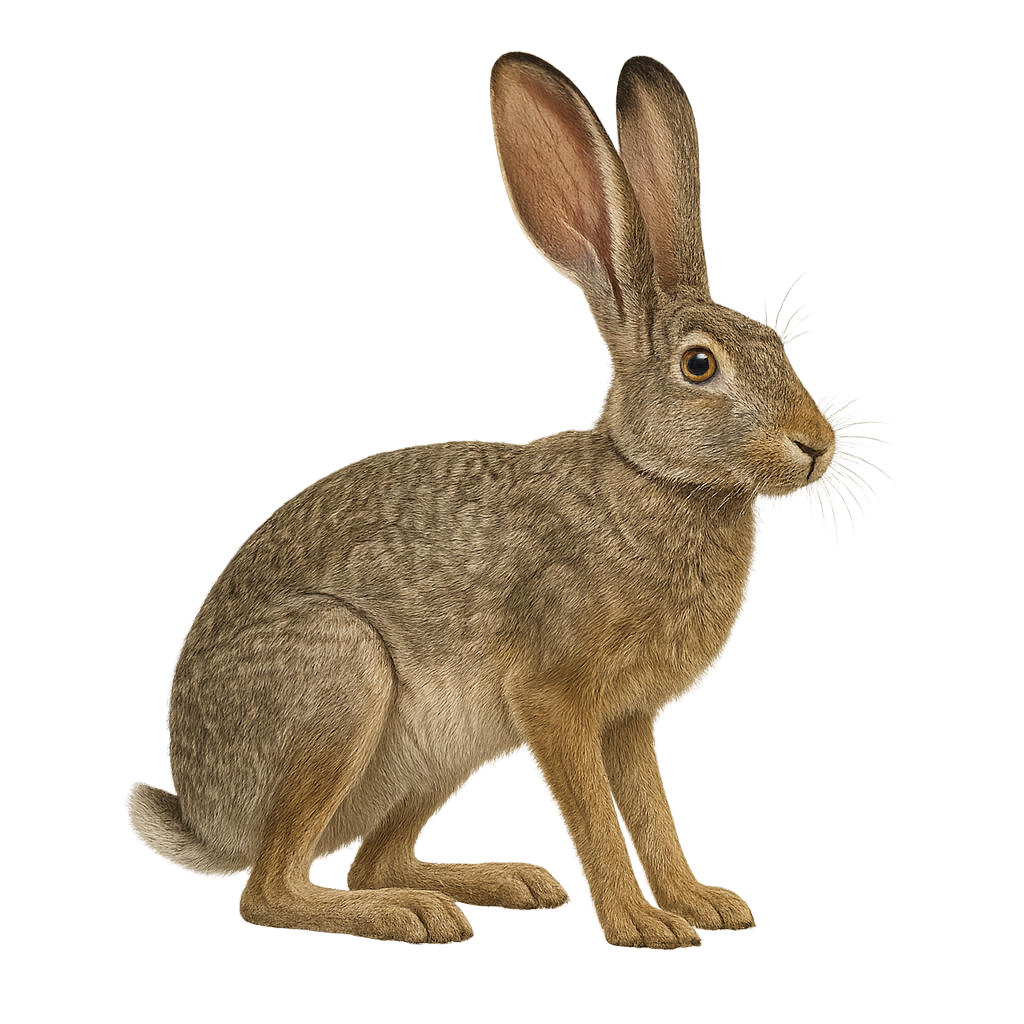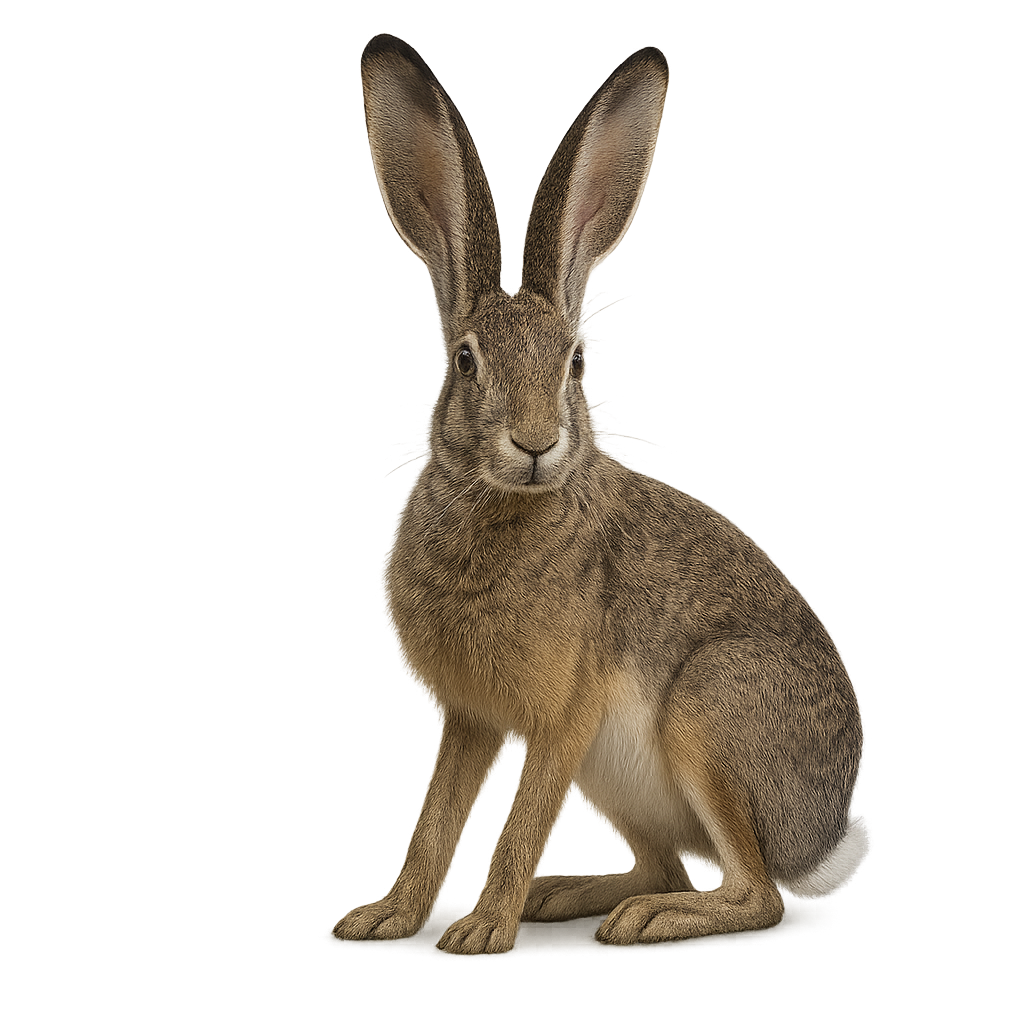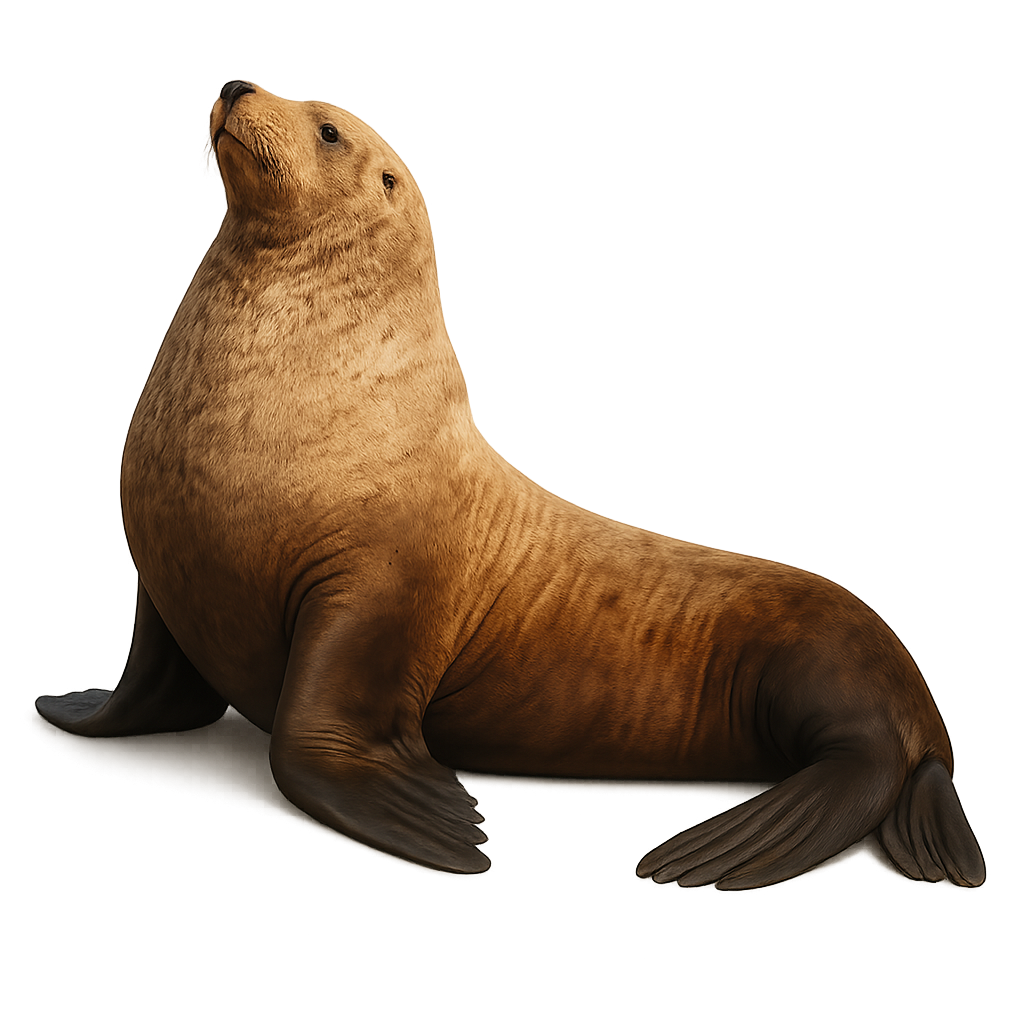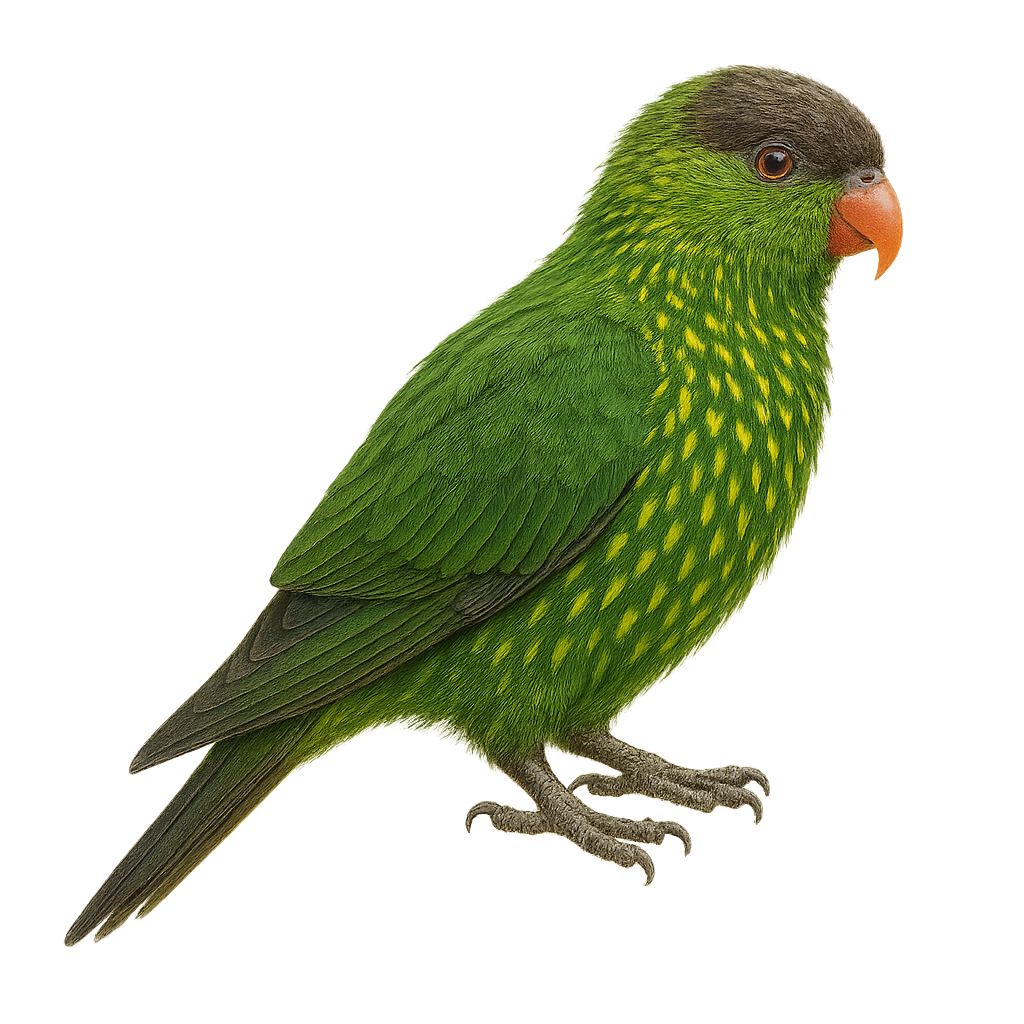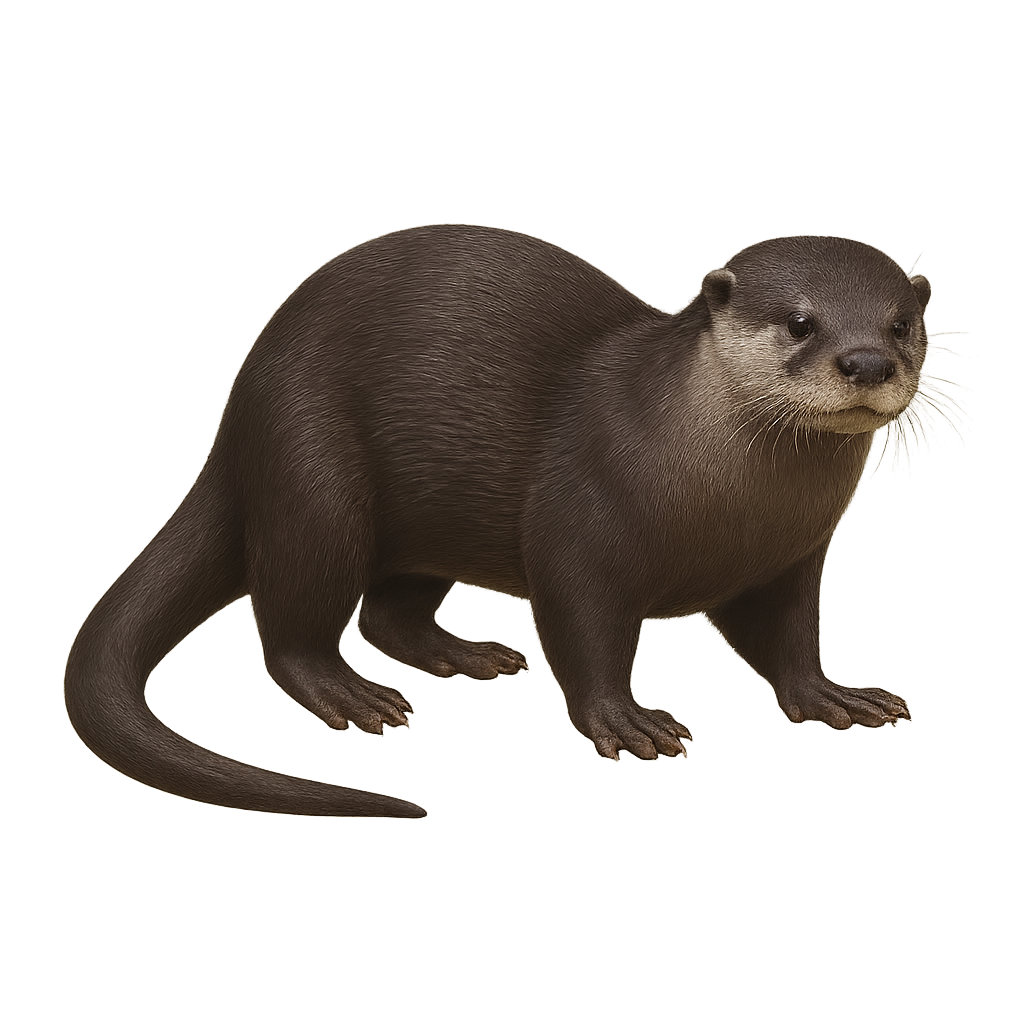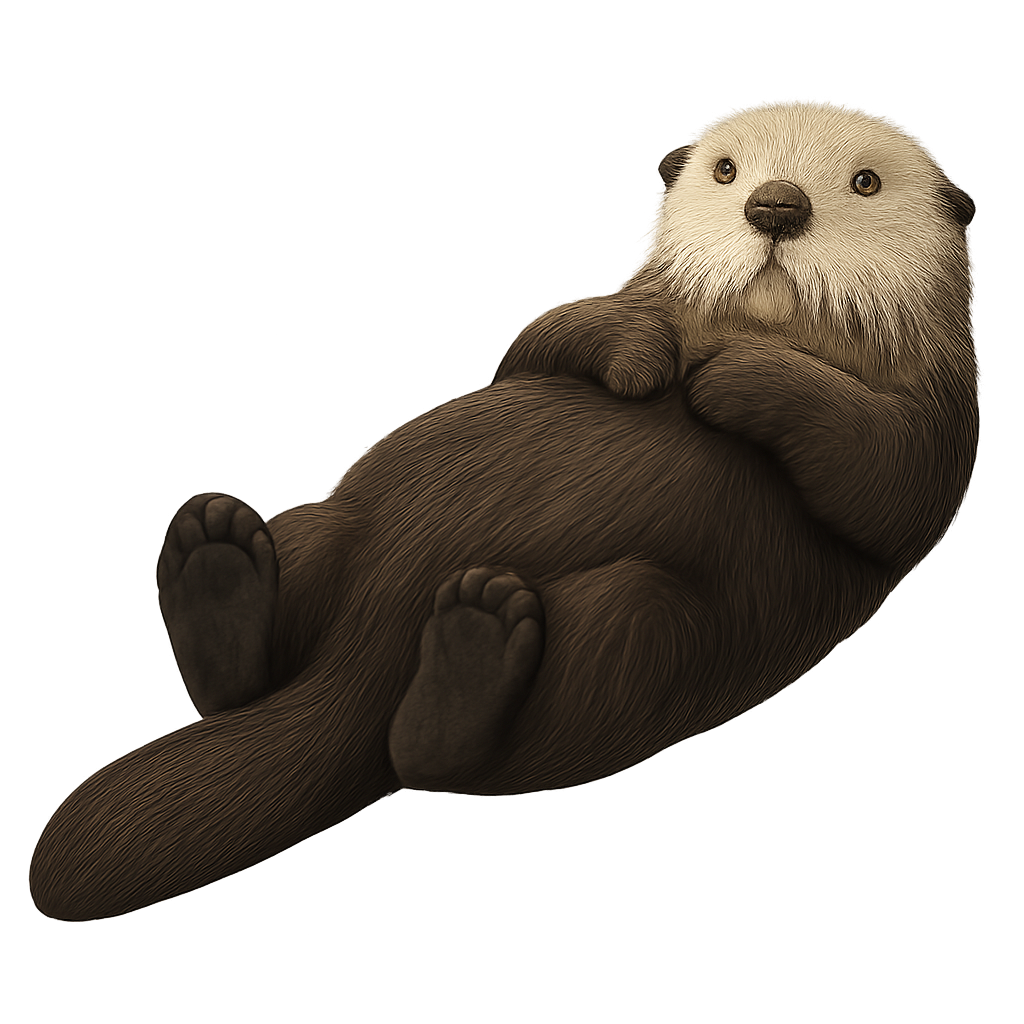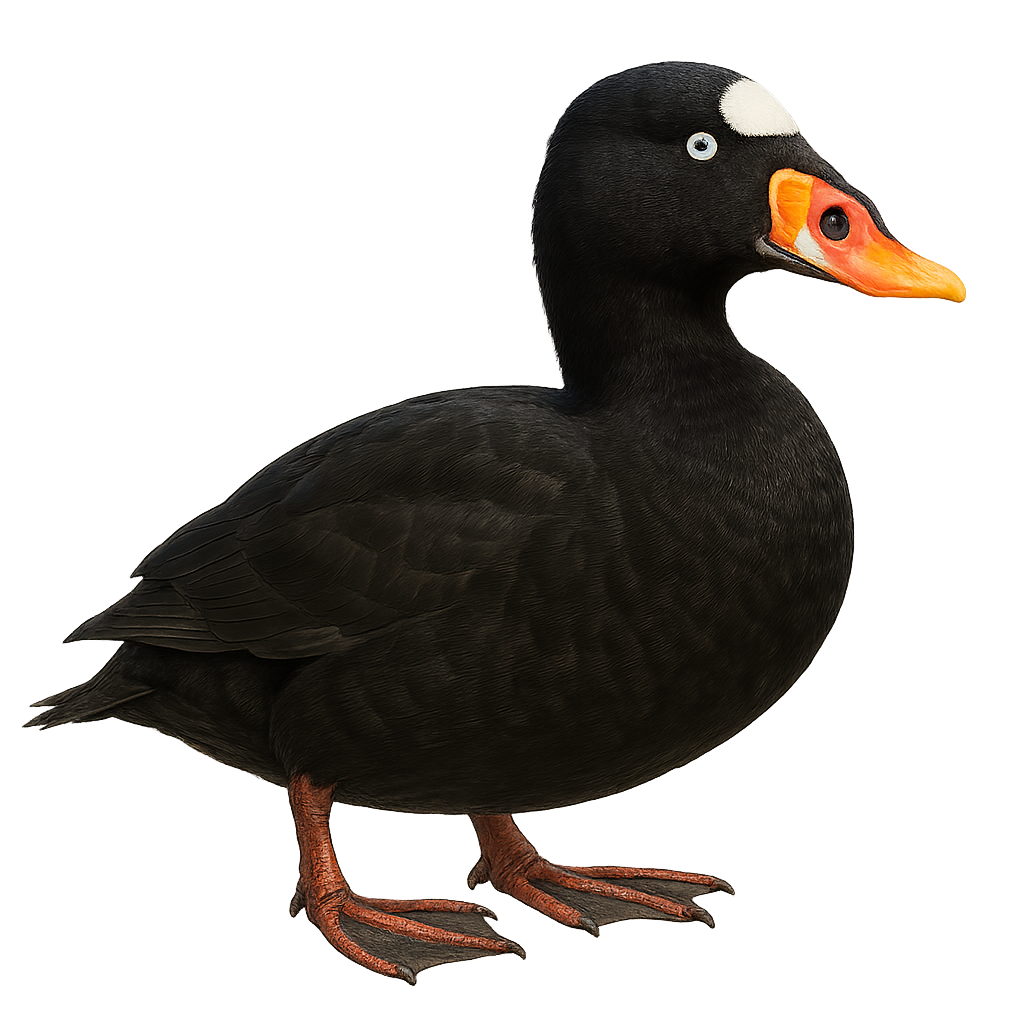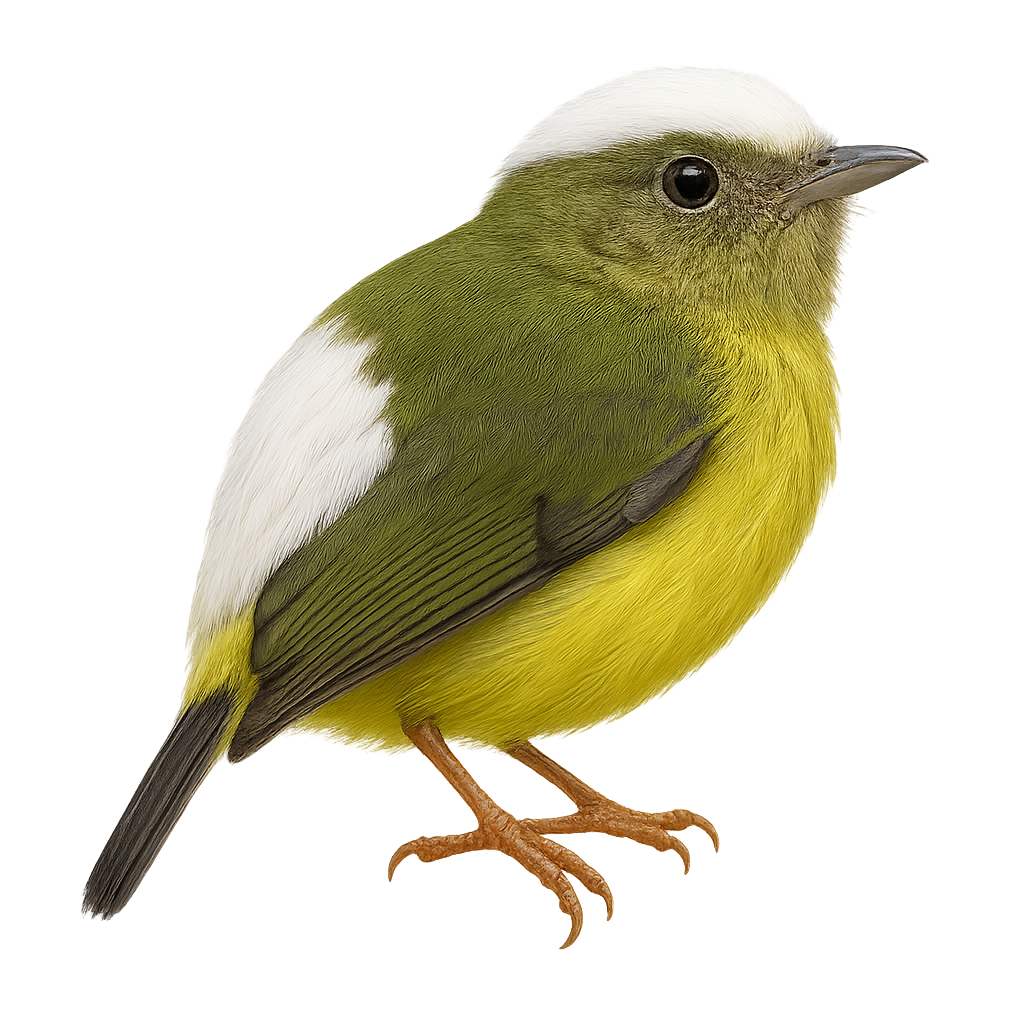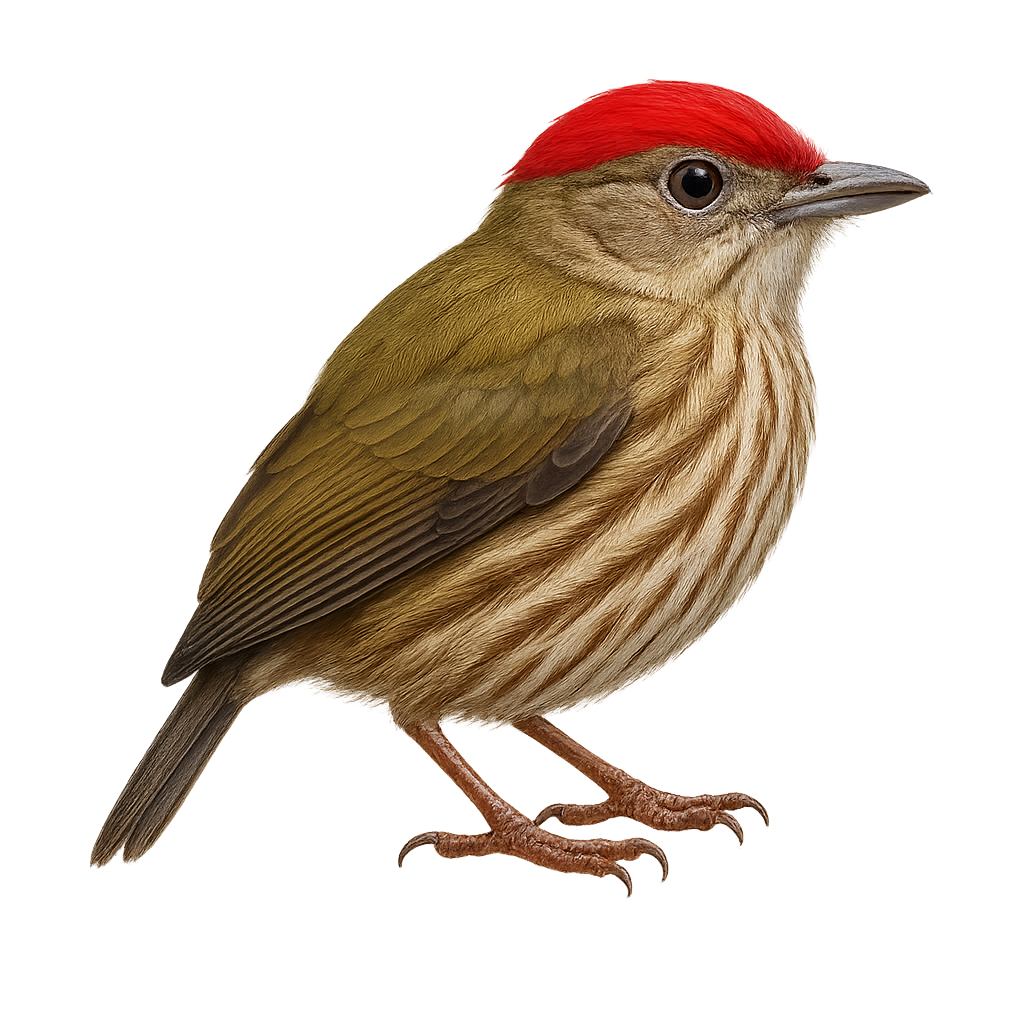The Southern Rough-winged Swallow, Stelgidopteryx ruficollis, is a small bird from the Hirundinidae family. It is characterized by its brown plumage on the back and lighter underparts, with a distinctive rufous hue on the forehead. This species is mainly found in Central and South America, frequenting open areas near water such as rivers and lakes. It is often seen in flight, catching insects mid-air with agility and speed. Sociable in nature, it nests in colonies, often in natural cavities or man-made structures. Its breeding period varies by region but is generally active during the warmer months.
The sand martin is a small migratory passerine bird found primarily along rivers, lakes, and wetland areas in Europe, Asia, and North Africa. It is easily recognized by its brown-olive plumage on the back and white on the belly, as well as its social behavior when it gathers in colonies to nest. This small bird primarily feeds on insects, which it captures in flight during its passes over the water.
The South Island Oystercatcher is a coastal bird endemic to New Zealand, primarily found on the South Island. It is characterized by its black and white plumage, bright red long bill, and pink legs. This bird is often seen on sandy beaches and estuaries, where it feeds mainly on mollusks and crustaceans. Although generally solitary, it can be observed in small groups, especially outside the breeding season. The South Island Oystercatcher is a migratory bird, moving to the north of the South Island and the North Island during the austral winter. Its population is stable but remains vulnerable to human disturbances and predation by introduced species.
The Sooty Oystercatcher is a medium-sized coastal bird, easily identified by its deep black plumage and bright red bill. It primarily inhabits the rocky and sandy shores of Australia, feeding on mollusks, crustaceans, and other marine invertebrates. Its piercing call is often heard before the bird is seen. While usually observed in pairs or small groups, it can form large colonies during the breeding season. The Sooty Oystercatcher is a sedentary bird, generally remaining loyal to its territory year-round. Its ability to adapt to various coastal environments makes it a resilient species, although some populations may be vulnerable to human disturbances and habitat loss.
The Striped Hyena is a medium-sized carnivore, easily recognizable by its striped coat and unique behavior among hyenas. It measures about 90 cm in length, with a shoulder height of 60 cm, and weighs between 40 and 60 kg. Its coat is mainly gray or beige, with black stripes on the flanks, helping it blend into its environment. The Striped Hyena has a wide head, large ears, and an elongated muzzle, along with a short tail. Unlike the spotted hyena, the Striped Hyena is more solitary and prefers to hunt alone or in small groups. It primarily feeds on small mammals, reptiles, and insects, but is also opportunistic and a scavenger, feeding on the carcasses of dead animals. It is found mainly in North Africa, in arid and semi-arid areas such as deserts and savannas. While the Striped Hyena is not endangered, it is threatened by habitat loss and human conflict.
The Spotted Hyena is a robust carnivore, known for its complex social behavior and distinctive call. It measures between 90 and 150 cm in length, with a shoulder height of about 70 cm, and weighs between 40 and 80 kg. Its coat is characterized by black and brown spots on a yellow-gray background, giving it a unique appearance. The Spotted Hyena primarily inhabits savannas, open grasslands, and wooded areas in sub-Saharan Africa, where it forms large clans organized around a strict hierarchy. It is primarily carnivorous, feeding on large prey such as gazelles and zebras, but it is also an opportunistic scavenger, feeding on carcasses of animals killed by other predators. It is an effective hunter, using group strategies to capture prey. Although the species is relatively abundant, it is sometimes viewed negatively due to its reputation as a scavenger, but it plays an important role in ecosystems by eliminating carcasses and regulating animal populations.
The Southern Bald Ibis, Geronticus calvus, is a medium-sized bird known for its distinctive bare, reddish head and glossy black plumage with metallic sheen. It inhabits open grasslands and mountainous regions of southern Africa, particularly in South Africa, Lesotho, and Eswatini. This gregarious bird feeds mainly on insects, small reptiles, and seeds, which it finds by probing the ground with its long, curved bill. Colonies often nest on cliffs or rocky outcrops, building cup-shaped nests with twigs and grass. Although their population is stable, they are vulnerable to habitat loss and human disturbances.
Native to coastal regions of South America and the Caribbean, the scarlet ibis is a bird recognizable by its bright red plumage. It primarily lives in wetlands and mangroves, feeding mainly on small fish, crustaceans, and invertebrates. This migratory bird is often seen in groups, where its bright colors create impressive visual displays. While the scarlet ibis is not threatened, habitat destruction poses a risk to its population.
The Sacred Ibis is a large bird with primarily white plumage, with black feathers on its wings and a bare head. It measures about 65 to 75 cm in length, with a wingspan of 1.2 to 1.3 meters, and weighs between 1.5 and 2.5 kg. Its beak is long and curved, adapted for probing the ground in search of small invertebrates, fish, crustaceans, and mollusks. The Sacred Ibis primarily inhabits wetlands, such as marshes, rivers, and lakes, in sub-Saharan Africa, as well as Southeast Asia and Egypt. This bird holds particular significance in ancient Egyptian culture, where it was associated with the deity Thoth, the god of wisdom and writing. The Sacred Ibis is often seen in large colonies and prefers to feed in groups, probing water and mud for food. Although the species is not immediately endangered, it is vulnerable to habitat loss, pollution, and hunting.
The Spot-breasted ibis, scientifically known as Bostrychia rara, is a fascinating bird belonging to the Threskiornithidae family. This bird is distinguished by its dark plumage and green iridescence on the head, giving it a unique and captivating appearance. It primarily inhabits wetlands, marshes, and dense tropical forests, where it feeds on small invertebrates, fish, and plant matter. Although not very shy, it remains suspicious of humans, making observation a challenge. Its breeding period is poorly documented, but it is known to build nests in trees, often in colonies. Its population is currently stable, but deforestation and habitat loss could threaten its future.
The Spotted Honeyguide, or Indicator maculatus, is a fascinating bird belonging to the family Indicatoridae. This small bird is primarily known for its unique behavior of guiding humans and animals to wild bee hives, from which it derives its name. It measures about 18 cm in length and features an olive-brown plumage with distinctive white spots on its wings and belly. Its natural habitat spans the tropical and subtropical forests of Central and West Africa. The Spotted Honeyguide is a diurnal bird, active mainly during the day, and feeds primarily on beeswax and bee larvae. Although its conservation status is currently considered "least concern," deforestation and habitat loss could pose long-term threats.
The Somali Hoopoe is a fascinating bird, recognizable by its glossy black plumage with metallic sheen and long curved beak. It primarily inhabits the arid and semi-arid regions of the Horn of Africa, notably in Somalia and parts of Ethiopia. This bird is often seen in small groups, feeding on insects it digs out of the ground with its beak. Although it is relatively not very shy, it remains cautious of potential threats. Its song is a mix of whistles and trills, often heard at dawn and dusk. The Somali Hoopoe plays an important role in its ecosystem by controlling insect populations.
The Saddle-billed Stork is a large wading bird with distinctive black and white plumage and a bright red bill with a black band. It stands about 1.5 meters tall and has an impressive wingspan. Found mainly in sub-Saharan Africa's wetlands, it feeds on fish, frogs, and small reptiles. This majestic bird is often seen alone or in pairs, slowly patrolling shallow waters in search of prey. Although its conservation status is currently of least concern, habitat destruction poses a potential threat. The Saddle-billed Stork is a symbol of African wetland biodiversity and a fascinating sight for birdwatchers and nature enthusiasts.
The Spotted Bowerbird, or Chlamydera maculata, is a fascinating bird native to Australia. It is renowned for its elaborate courtship behaviors, where the male constructs structures called bowers, decorated with various colorful objects to attract females. This medium-sized bird features a brown plumage speckled with white, with a distinctive pink patch on the back of its head. It primarily inhabits dry forests, savannas, and open woodland areas. The Spotted Bowerbird is diurnal, being most active in the morning and late afternoon. Although it is relatively tolerant of human presence, it remains cautious and prefers to keep its distance.
The Southern Brown Kiwi, or Apteryx australis, is a flightless bird endemic to New Zealand, known for its shaggy brown plumage. This medium-sized kiwi measures about 50 cm in length and weighs between 2 and 3.5 kg. It has a long, slender bill adapted for probing the ground for worms and insects. Nocturnal by nature, it is rarely seen during the day. Its natural habitat includes dense forests and scrublands. The Southern Brown Kiwi is monogamous, forming long-lasting pairs. The female typically lays one or two eggs per season, which the male incubates. Although protected, it is threatened by predation and habitat loss.
The South Polar Skua is a robust seabird, primarily recognized for its dark brown plumage and aggressive behavior. It breeds mainly in Antarctica and migrates to oceans worldwide during the austral winter. This bird is an opportunistic predator, feeding on fish, small birds, and carrion. It is also known for its kleptoparasitic behavior, stealing food from other seabirds. The South Polar Skua is well adapted to the extreme conditions of its breeding habitat, with a compact body and powerful wings that allow it to fly long distances. Its ability to survive in harsh environments makes it a fascinating subject of study for ornithologists.
The Scottish Ptarmigan, or Lagopus lagopus scotica, is a subspecies of the Willow Ptarmigan, specifically found in the mountains of Scotland. It measures about 30 to 35 cm in length and weighs between 300 and 450 g. Its plumage changes with the seasons: in winter, it is entirely white, allowing it to blend perfectly into the snow, while in summer, it has a brown-red spotted plumage that makes it blend into the Scottish moorlands. The Scottish Ptarmigan inhabits the highlands, particularly in the northern mountains of Scotland, where it primarily feeds on plants, berries, seeds, and young shoots. Although it is a bird difficult to spot due to its excellent camouflage, it remains vulnerable to climate change and the loss of its natural habitat. The Scottish Ptarmigan is also threatened by predation from foxes and mustelids and by human activities, including tourism and land management.
The Sri Lankan Leopard, Panthera pardus kotiya, is a leopard subspecies endemic to Sri Lanka. It is distinguished by its spotted coat, ranging from golden yellow to brown, with distinct black rosettes. This feline is the island's largest predator and plays a crucial role in the ecosystem by regulating prey populations. It inhabits various environments, from tropical rainforests to dry shrublands. Unfortunately, it is threatened by habitat loss, poaching, and human-wildlife conflict. Conservation efforts are vital to ensure its survival.
The sand lizard, Lacerta agilis, is a medium-sized reptile, typically measuring between 15 and 25 cm in length, including the tail. Its coloration ranges from brown to green, with spotted patterns that help it blend into its surroundings. Males often display a brighter green hue, especially during the breeding season. This lizard is primarily found in Europe, favoring open habitats such as grasslands, sand dunes, and forest edges. Active during the day, it basks in the sun to regulate its body temperature. It feeds on insects, spiders, and occasionally small invertebrates. Although its conservation status is concerning in some areas, it remains relatively common in others.
The Schreiber's Green Lizard, or Lacerta schreiberi, is a fascinating reptile primarily found in the Iberian Peninsula. This lizard is particularly recognizable by its bright green color, often speckled with black spots, which allows it to blend into its natural environment. Males display a vibrant blue throat, especially during the breeding season. They prefer humid and wooded habitats, such as oak forests and wet meadows, where they can hide among dense vegetation. Mainly active during the day, these lizards are agile and fast, which helps them escape predators. Their diet consists mainly of insects and other small invertebrates.
Ophisops elegans, commonly known as the snake-eyed lizard, is a small, agile reptile, typically measuring between 15 and 20 cm in length. Its smooth skin features a brown-green coloration with lighter patterns on the back, allowing it to blend seamlessly into its natural surroundings. This lizard is particularly recognizable by its transparent eyelids, giving it a unique gaze. It is primarily found in the arid and semi-arid regions of the Middle East and Southwest Asia, where it prefers rocky habitats and open grasslands. Active mainly during the day, it feeds on insects and other small invertebrates.
The Lepus microtis, commonly known as the scrub hare, is a medium-sized mammal found primarily in the savannas and grasslands of sub-Saharan Africa. This hare is easily recognizable by its long ears and grayish-brown fur, which helps it blend into its surroundings. It is mainly nocturnal, allowing it to avoid daytime predators. The scrub hare is an herbivore, feeding primarily on grasses, leaves, and young shoots. It has a remarkable ability to adapt, allowing it to survive in various habitats, from grassy plains to bushy areas. Although often solitary, it can sometimes be seen in small groups.
The Lepus saxatilis, commonly known as the scrub hare, is a medium-sized mammal belonging to the Leporidae family. It is primarily found in Southern Africa, inhabiting savannas, grasslands, and rocky areas. This hare is recognizable by its brown-grey fur, which provides excellent camouflage, and its long ears that offer superb hearing. Mostly nocturnal, it feeds on grasses, leaves, and bark. Although often solitary, it can sometimes be seen in small groups. Its speed and agility are its main defenses against predators.
The Steller sea lion is the largest otariid, with males reaching up to 3.3 m in length and weighing 600–1000 kg, with thick chestnut fur and a large head. It inhabits rocky shores and temperate coastal waters of the North Pacific, feeding mainly on fish, squid and crustaceans. During the breeding season, dominant males arrive in May to establish territories and harems, and females give birth to a single pup on shore in June–July.
The Striated Lorikeet, Charmosyna multistriata, is a small, colorful parrot native to the tropical forests of New Guinea. This lorikeet is distinguished by its bright green plumage adorned with fine red and yellow stripes on its belly, and a vivid orange beak. It measures about 18 cm in length and weighs between 30 and 40 grams. Its natural habitat includes lowland and mid-altitude rainforests, where it primarily feeds on nectar, pollen, and fruits. Although its conservation status is concerning due to deforestation, it remains relatively common in some areas. The Striated Lorikeet is known for its sociability and tendency to move in small, noisy groups.
The smooth-coated otter, Lutrogale perspicillata, is a semi-aquatic mammal belonging to the Mustelidae family. It is recognizable by its dense, smooth fur, typically dark brown on the back and lighter on the belly. This species is primarily found in South and Southeast Asia, inhabiting rivers, lakes, and swamps. It is well adapted to aquatic life with its webbed feet and muscular tail, allowing it to swim gracefully. The smooth-coated otter is a social animal, often living in family groups. It primarily feeds on fish but can also consume crustaceans and small mammals. Although its conservation status is concerning due to habitat loss and pollution, it plays a crucial role in the aquatic ecosystem.
The Sea Otter is a marine aquatic mammal primarily found along the coasts of the Pacific Ocean, particularly in North America and Northeast Asia. It measures between 1 and 1.5 meters in length, with a short tail of about 30 cm, and weighs between 14 and 45 kg, with females generally being smaller than males. Its coat is extremely dense and waterproof, with fine hairs that help it stay warm in the cold ocean waters. Unlike many other marine mammals, the Sea Otter does not have a layer of fat beneath its skin, making its fur all the more crucial for survival. This carnivore primarily feeds on shellfish, crustaceans, mollusks, fish, and sea urchins, often using rocks as tools to open them. The Sea Otter often lives in family groups called "rafts," floating together on the water's surface. Although it is protected in many areas, the Sea Otter is still threatened by pollution, habitat loss, and hunting.
The Surf Scoter, Melanitta perspicillata, is a medium-sized diving duck, easily identifiable by its black plumage and distinctive white forehead in males. Females have a more subdued brown plumage. This duck primarily feeds on mollusks, crustaceans, and small fish, which it captures by diving underwater. It is mainly found along the North American coasts but migrates southward in winter. The Surf Scoter is often seen in large flocks, making it a spectacular sight in flight. Although relatively common, it is sometimes threatened by marine pollution and habitat loss.
The Snow-capped Manakin is a small, colorful bird primarily found in the tropical rainforests of South America, particularly in Brazil. This passerine is easily recognizable by its striking black plumage contrasted with a bright white cap in males, while females display more subdued olive-green tones. Known for their spectacular courtship displays, males perform intricate dances to attract females. These birds are often seen in small groups and primarily feed on fruits and insects. Their habitat is threatened by deforestation, but they are currently classified as Least Concern by the IUCN.
The Striped Manakin, Machaeropterus striolatus, is a small, colorful bird found in the tropical forests of South America. It is easily recognizable by its vibrant plumage, with distinct stripes on its back and wings. Males display brighter colors than females, with shades of red, green, and black. This manakin is often seen in dense undergrowth, where it primarily feeds on fruits and insects. It is known for its spectacular courtship displays, where males perform complex dances to attract females. Although its habitat is threatened by deforestation, it remains relatively common in some areas.


